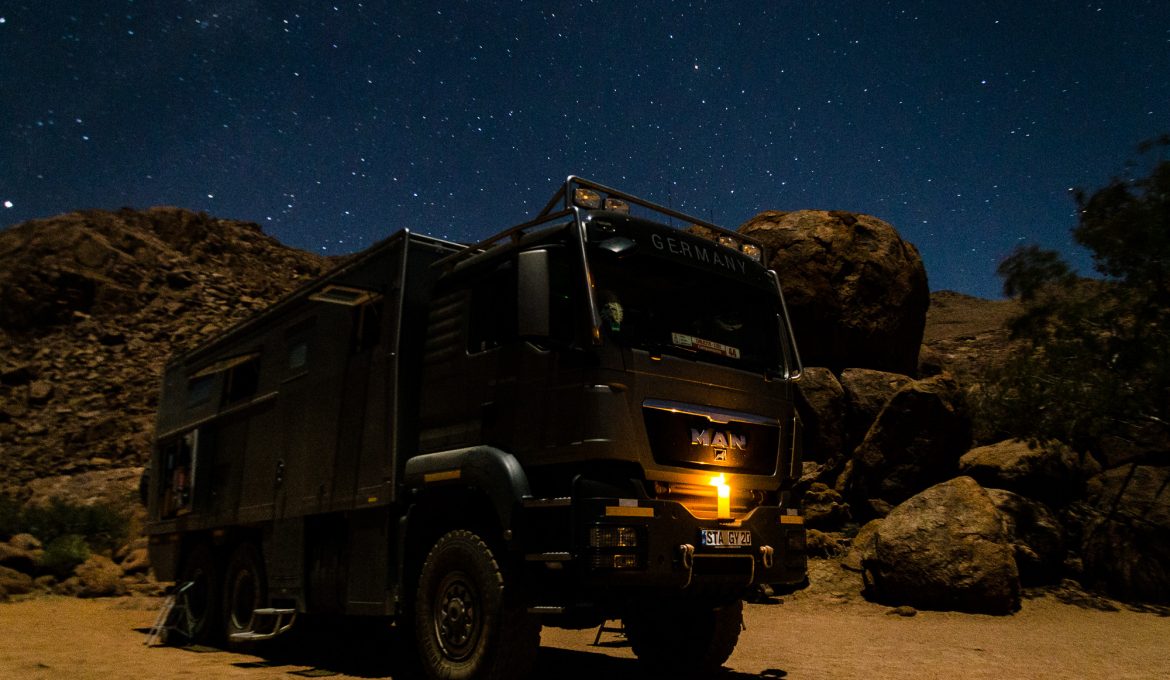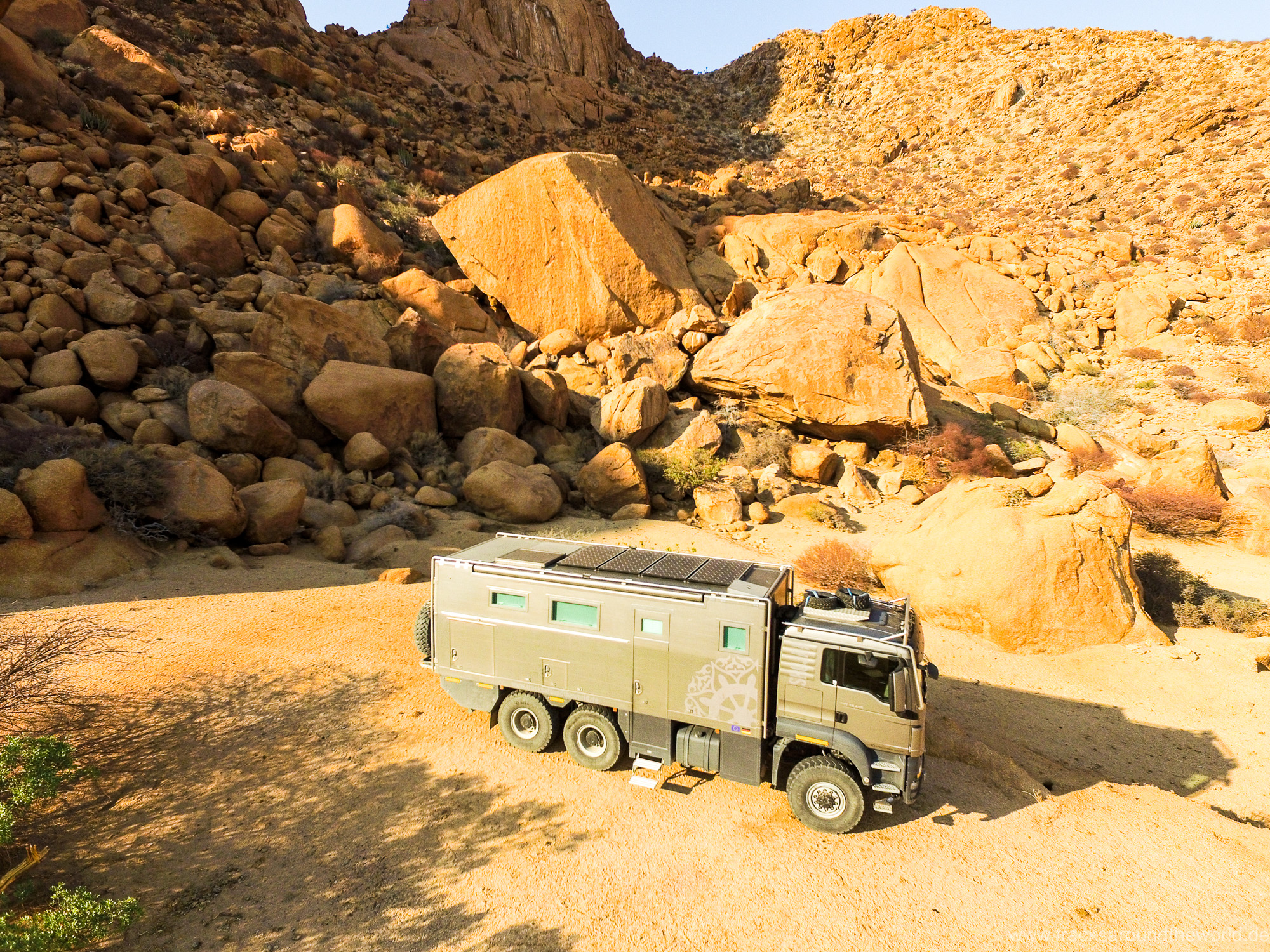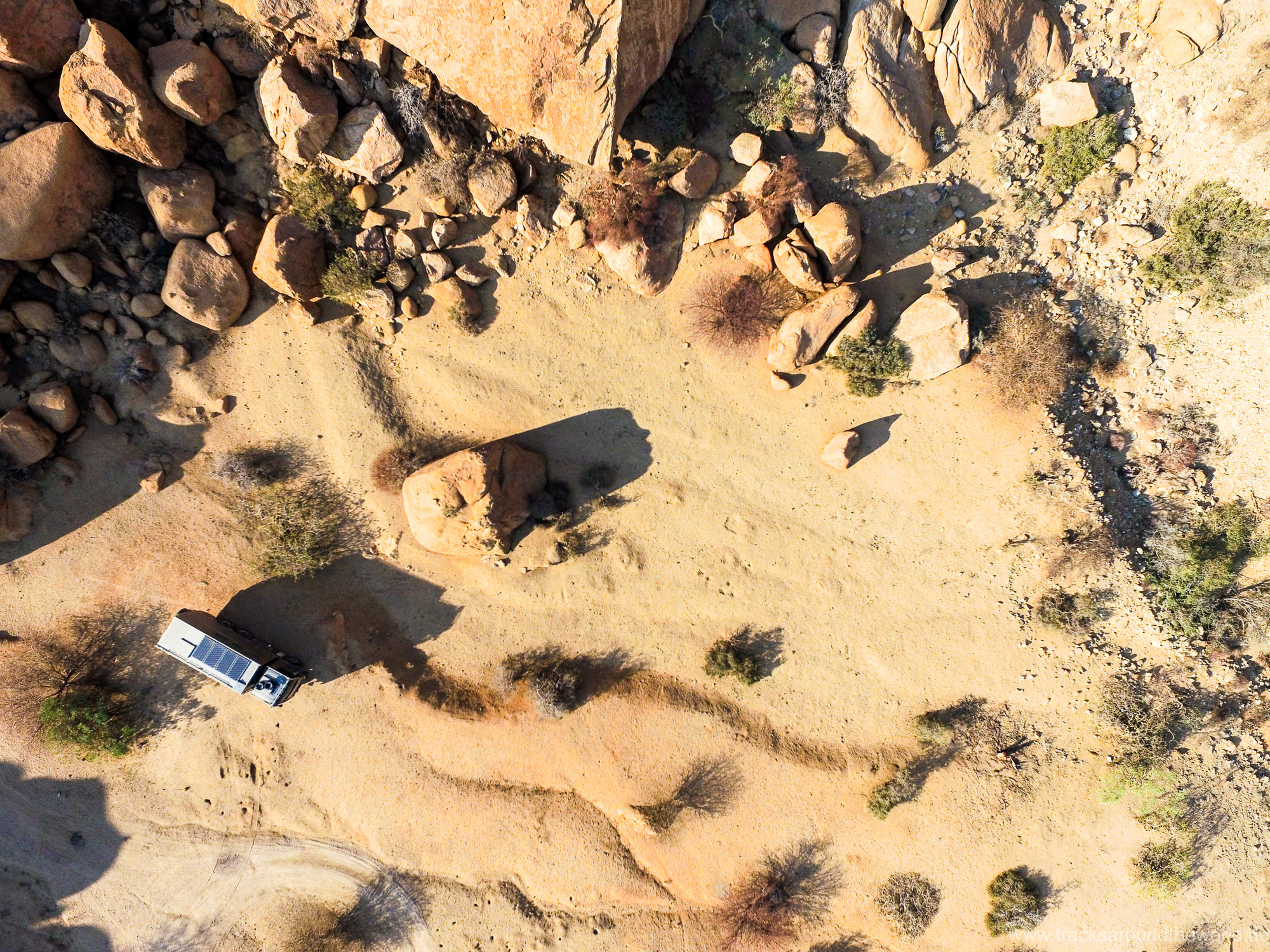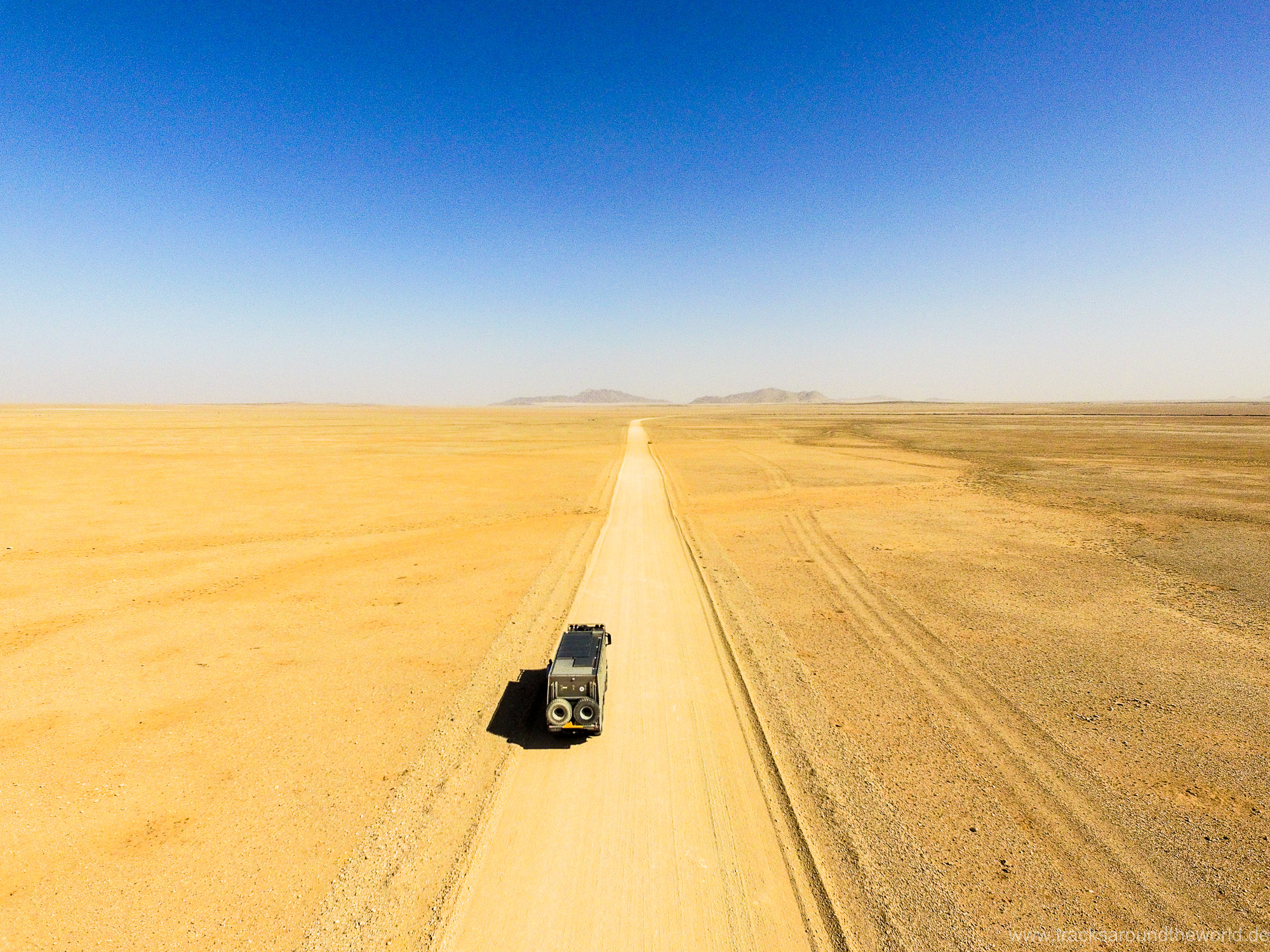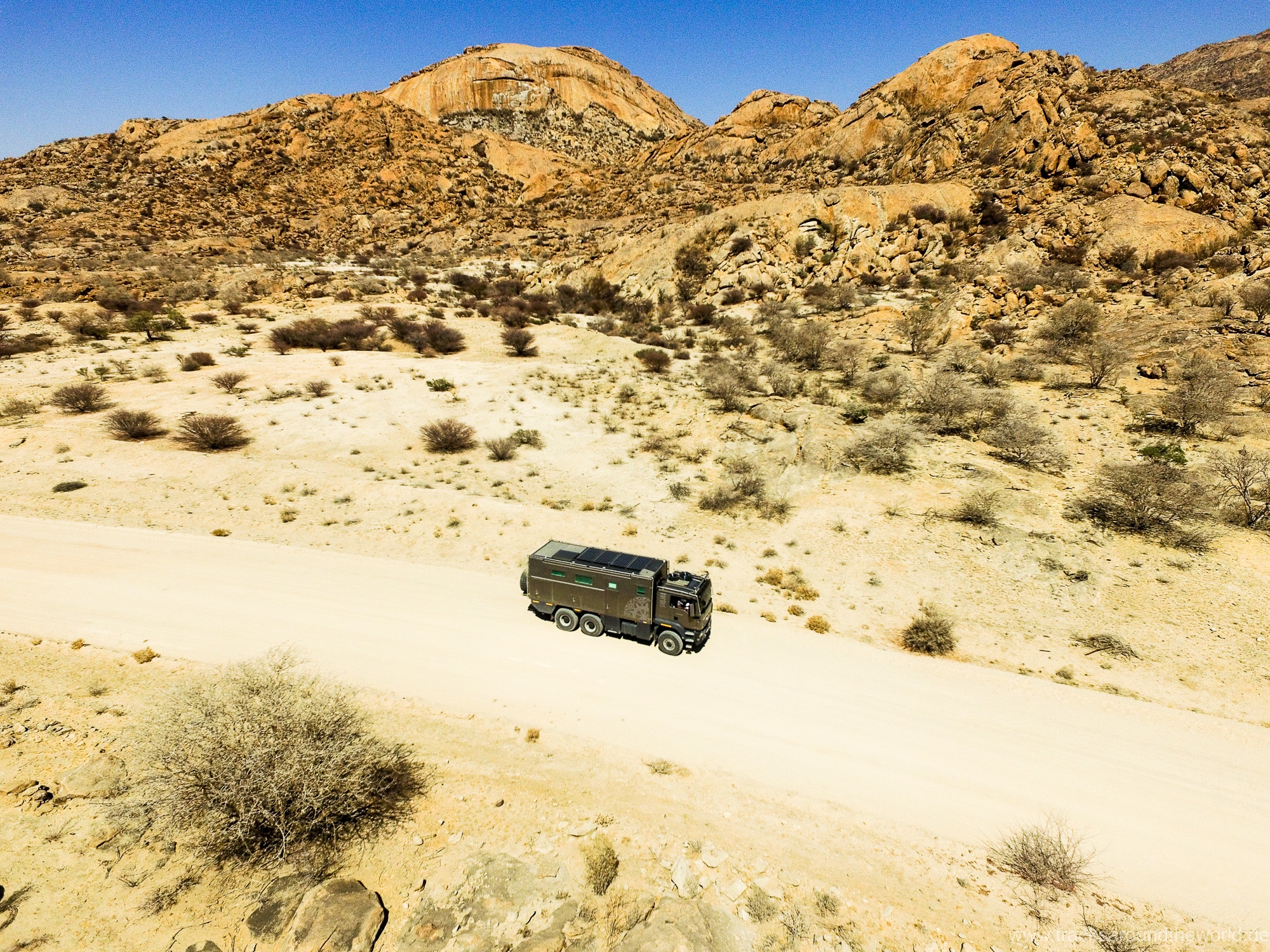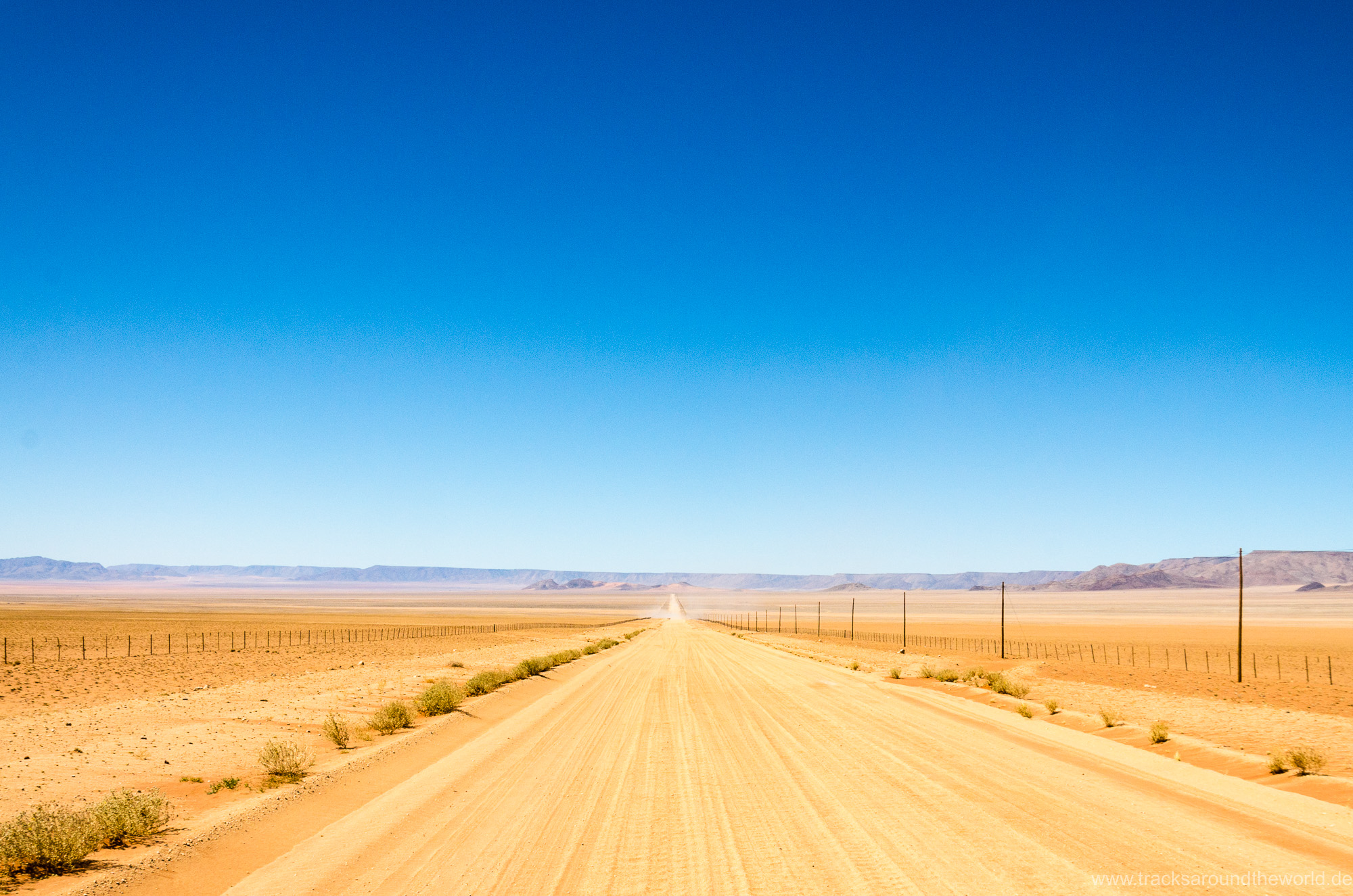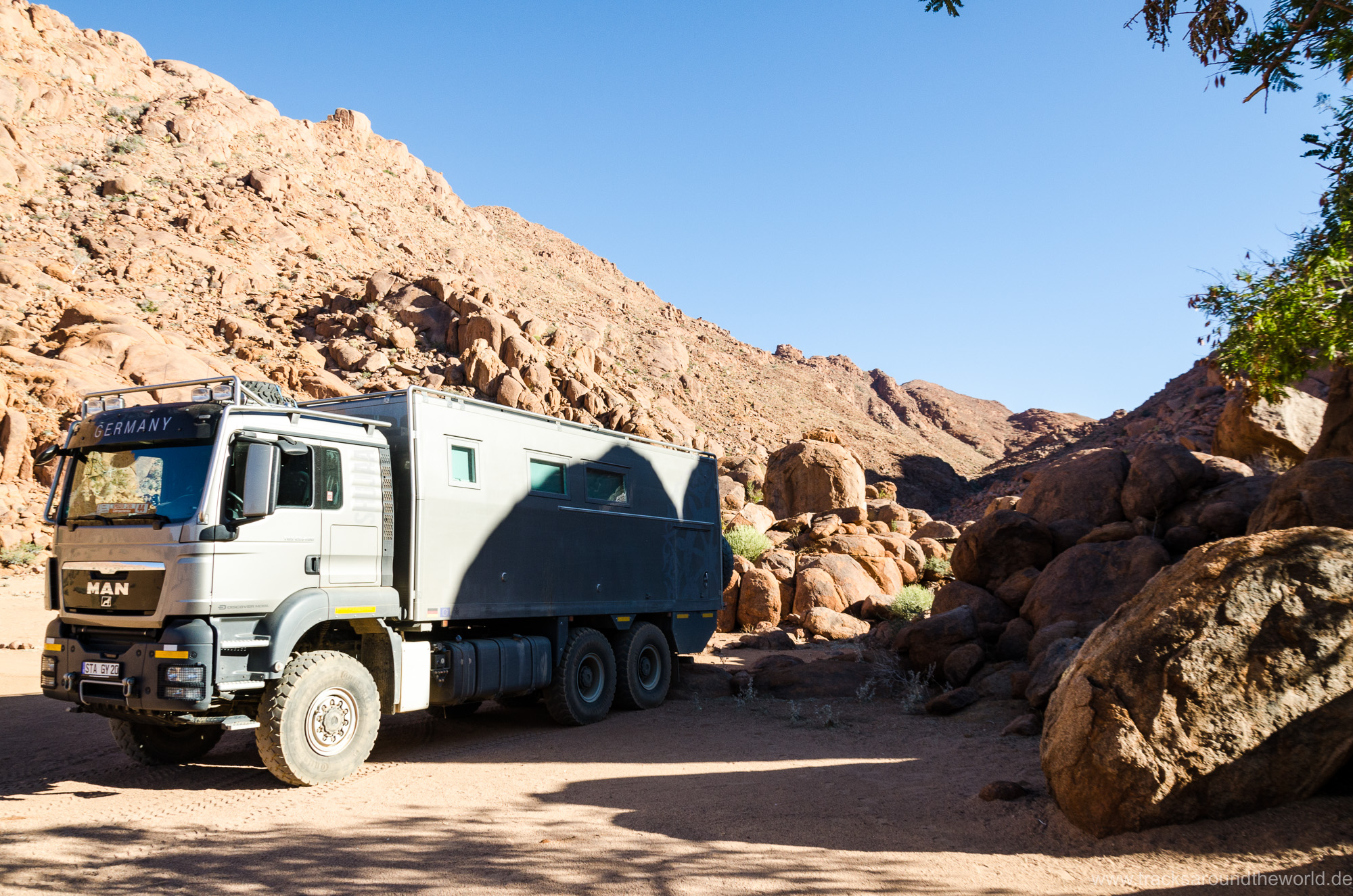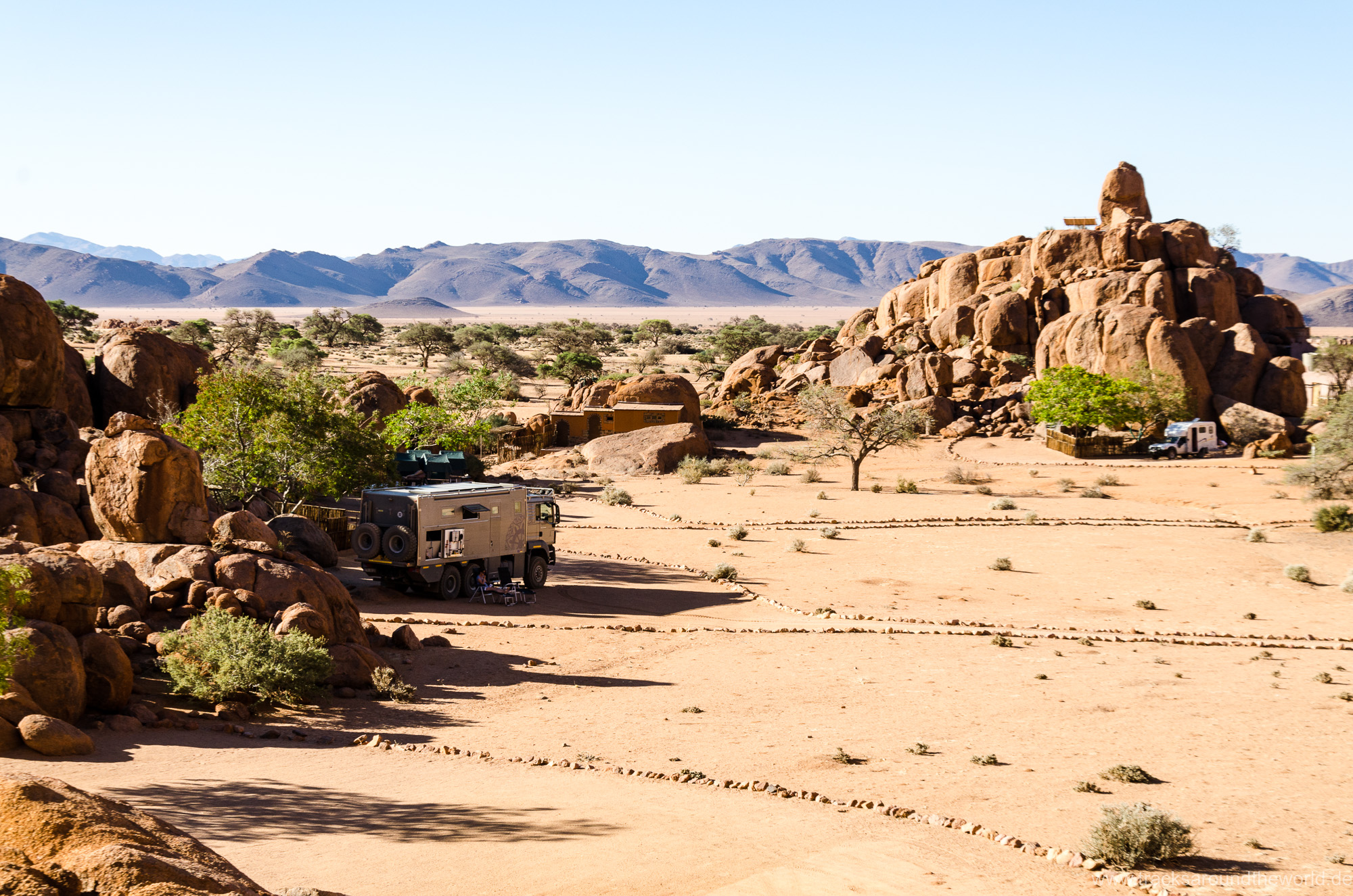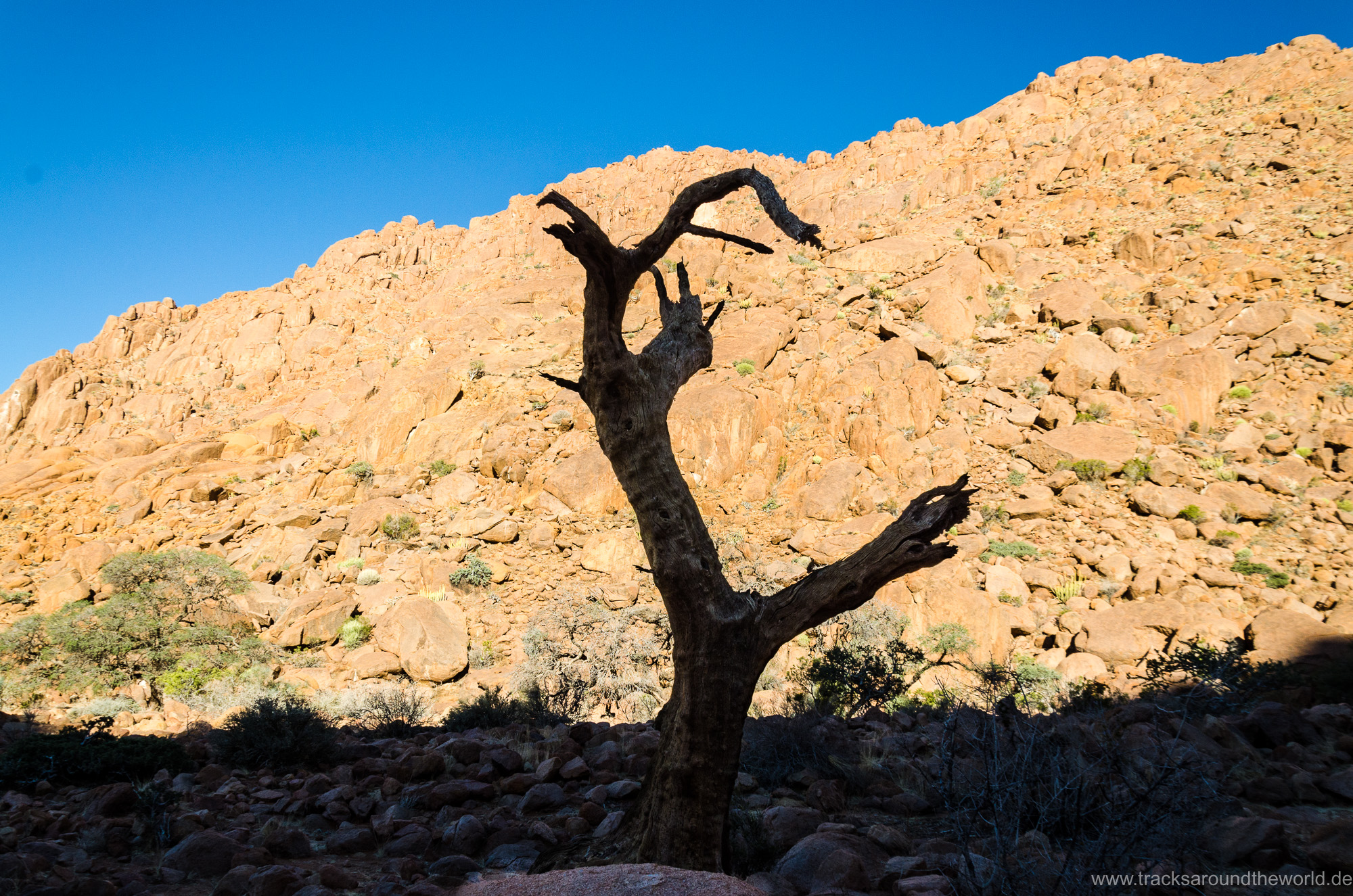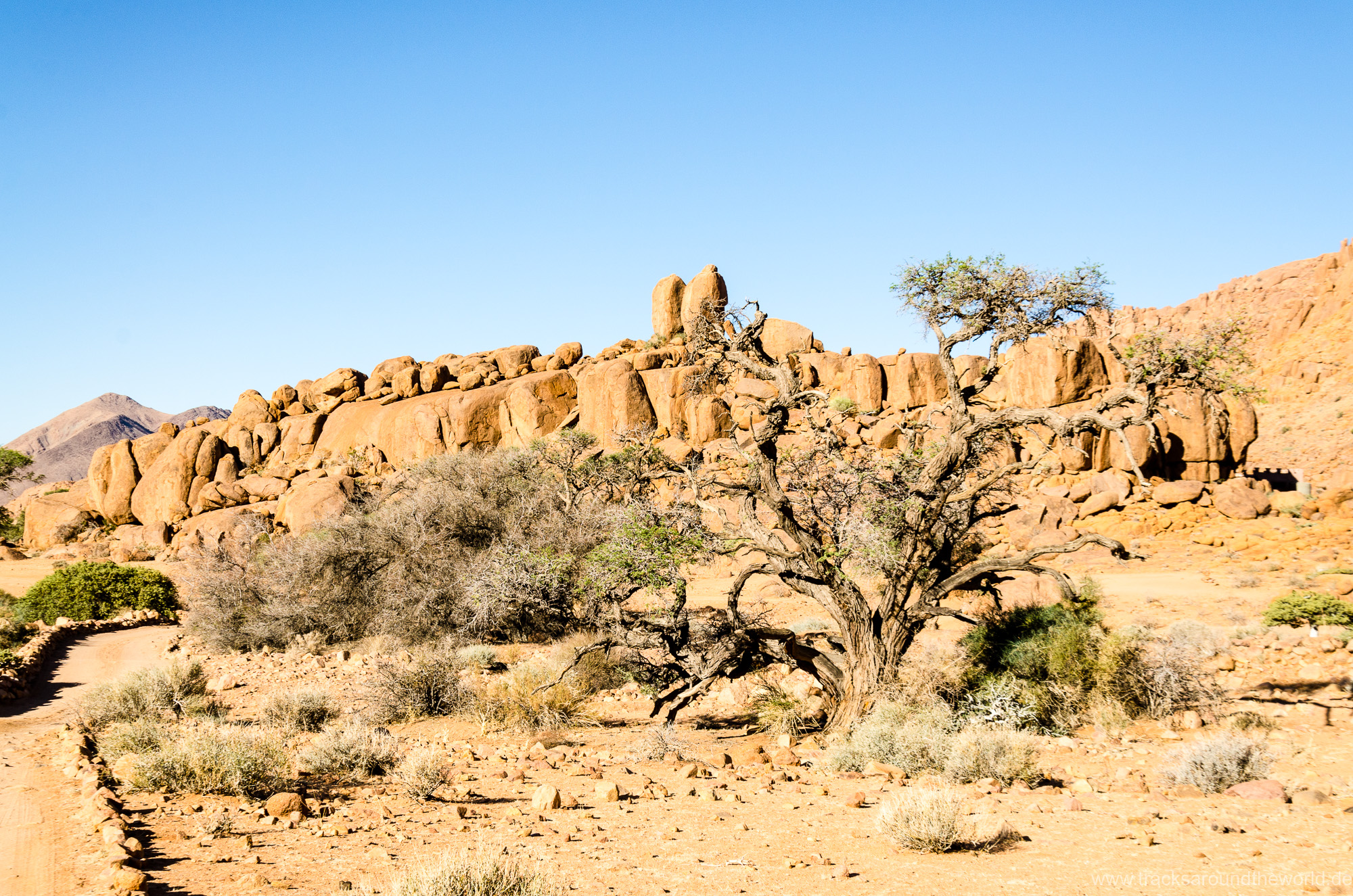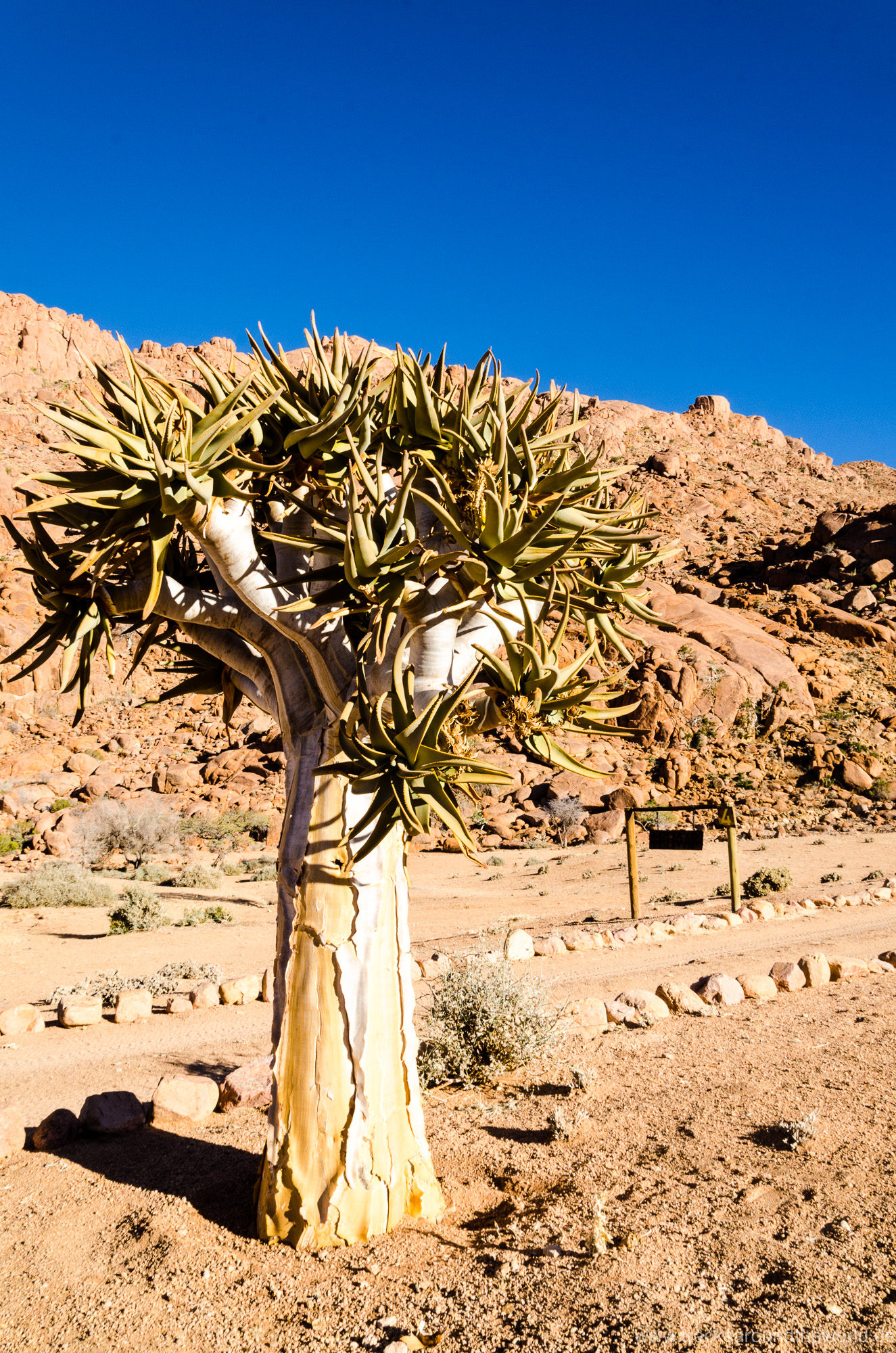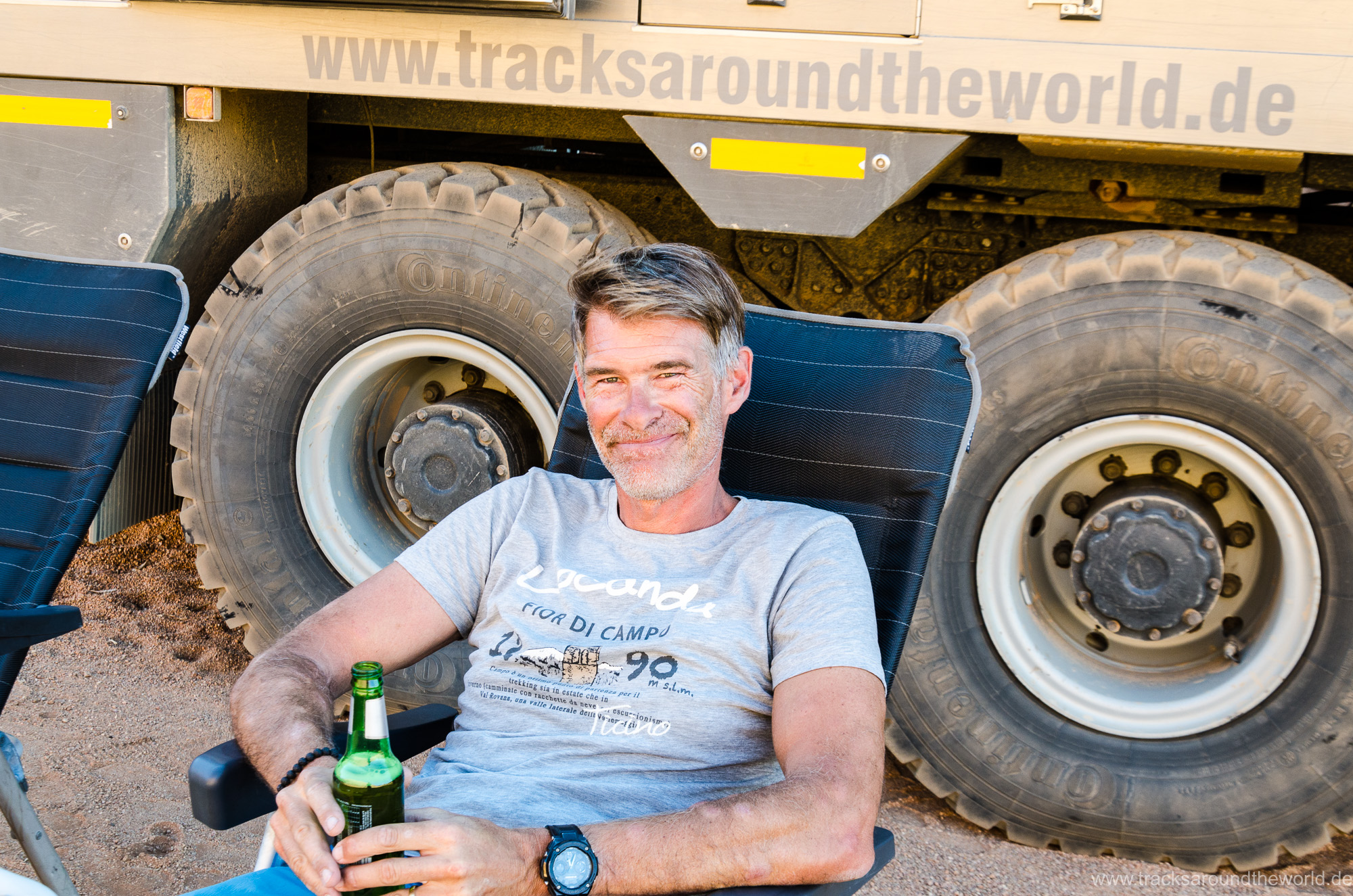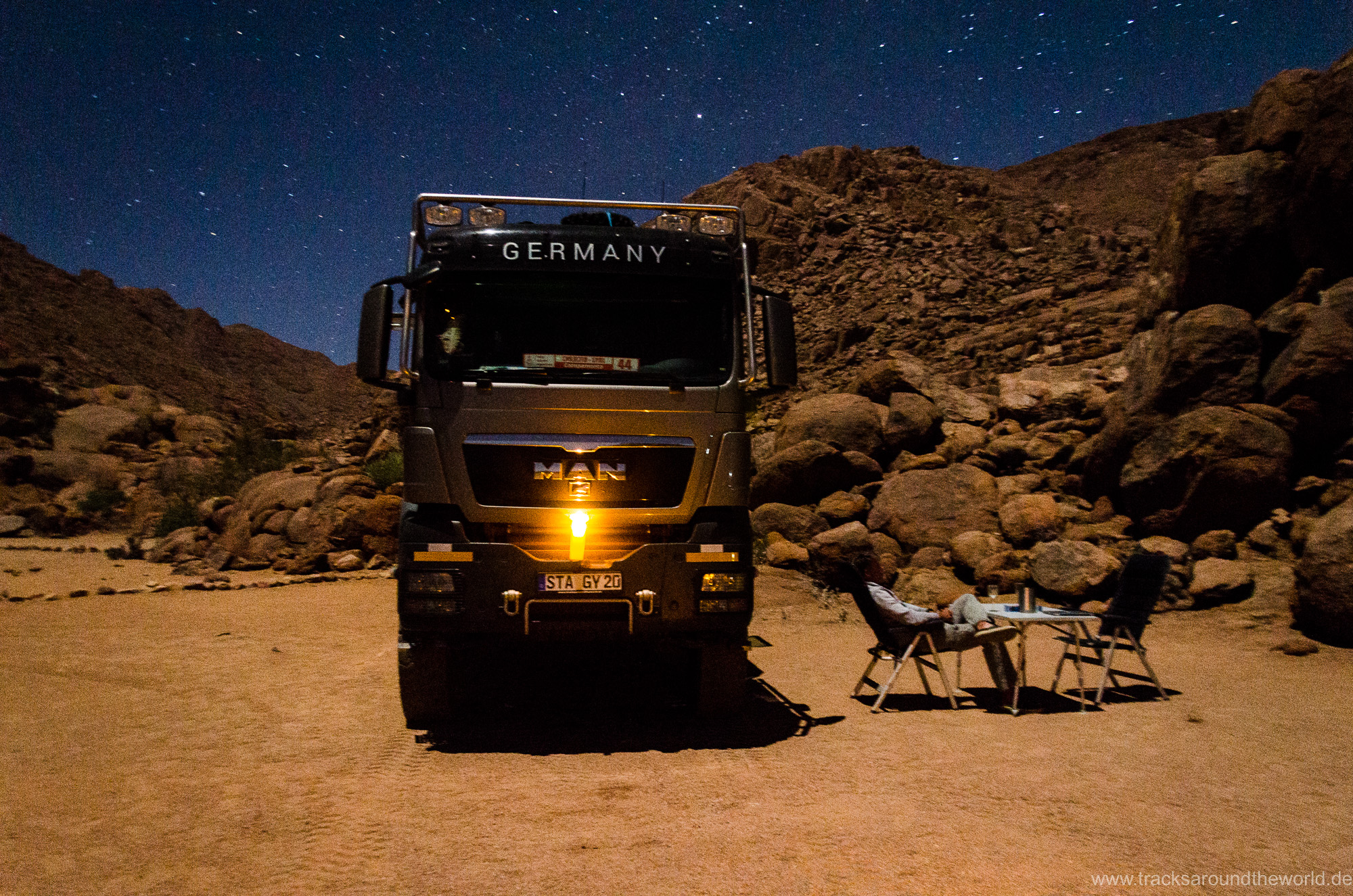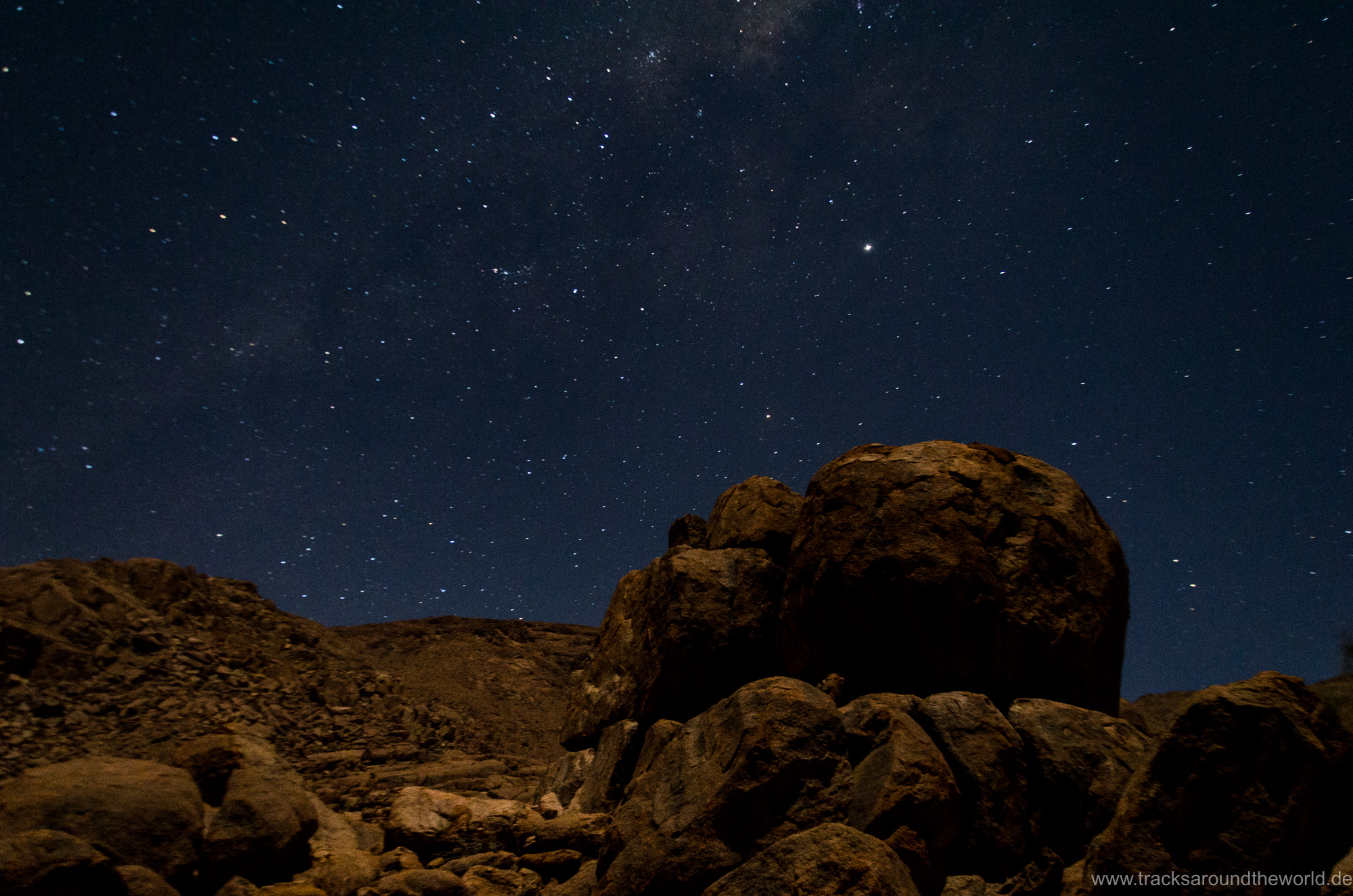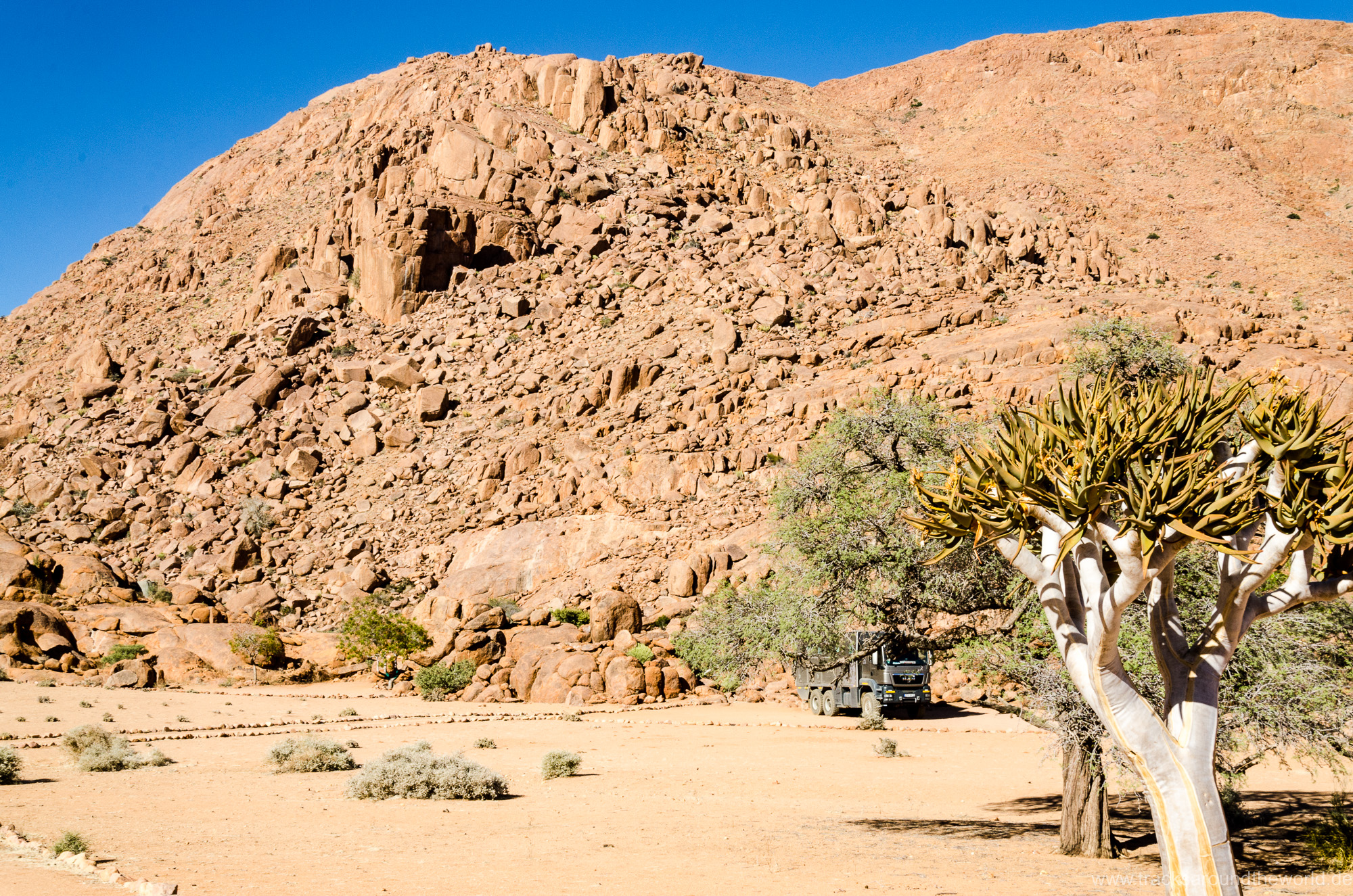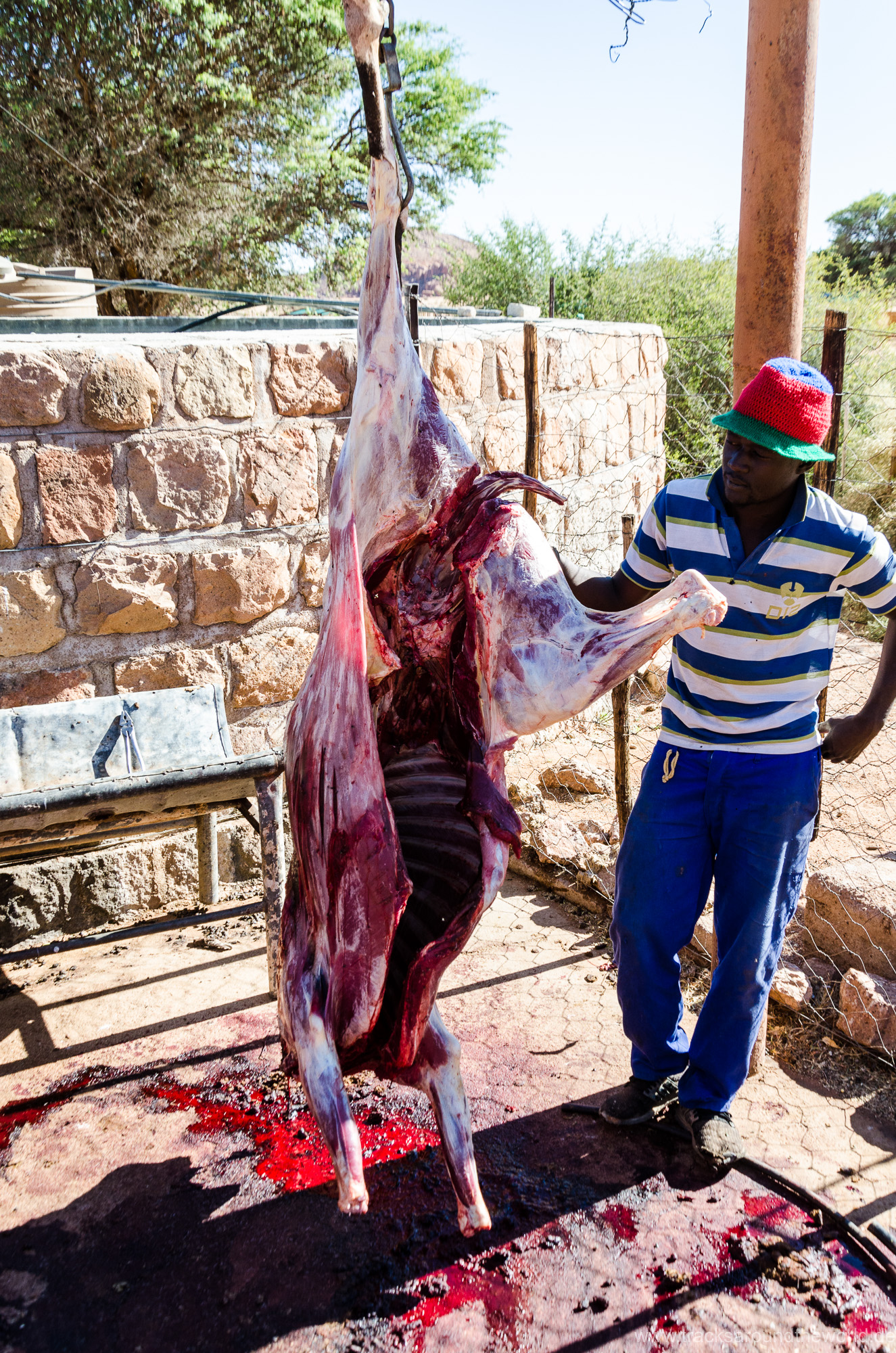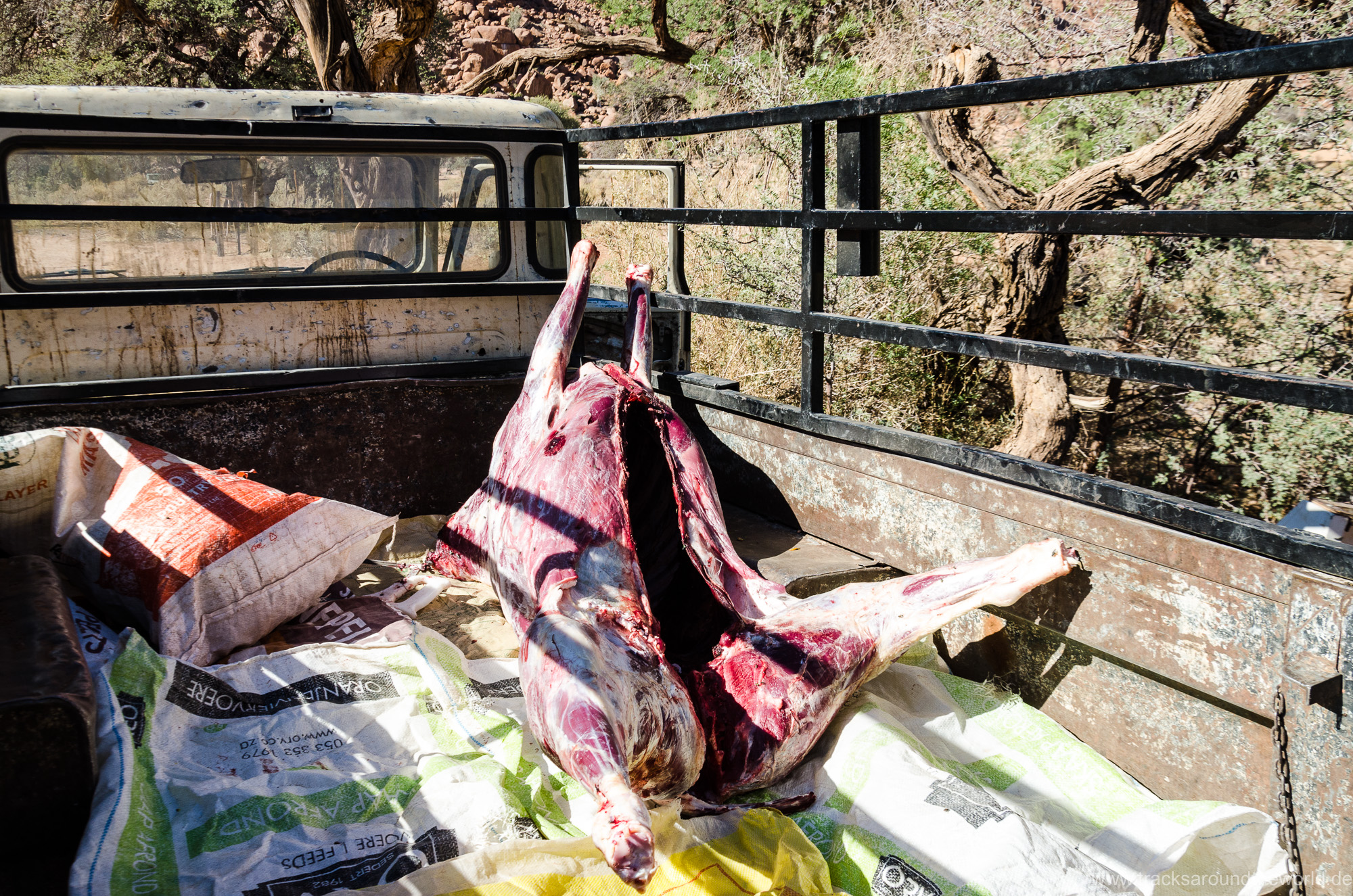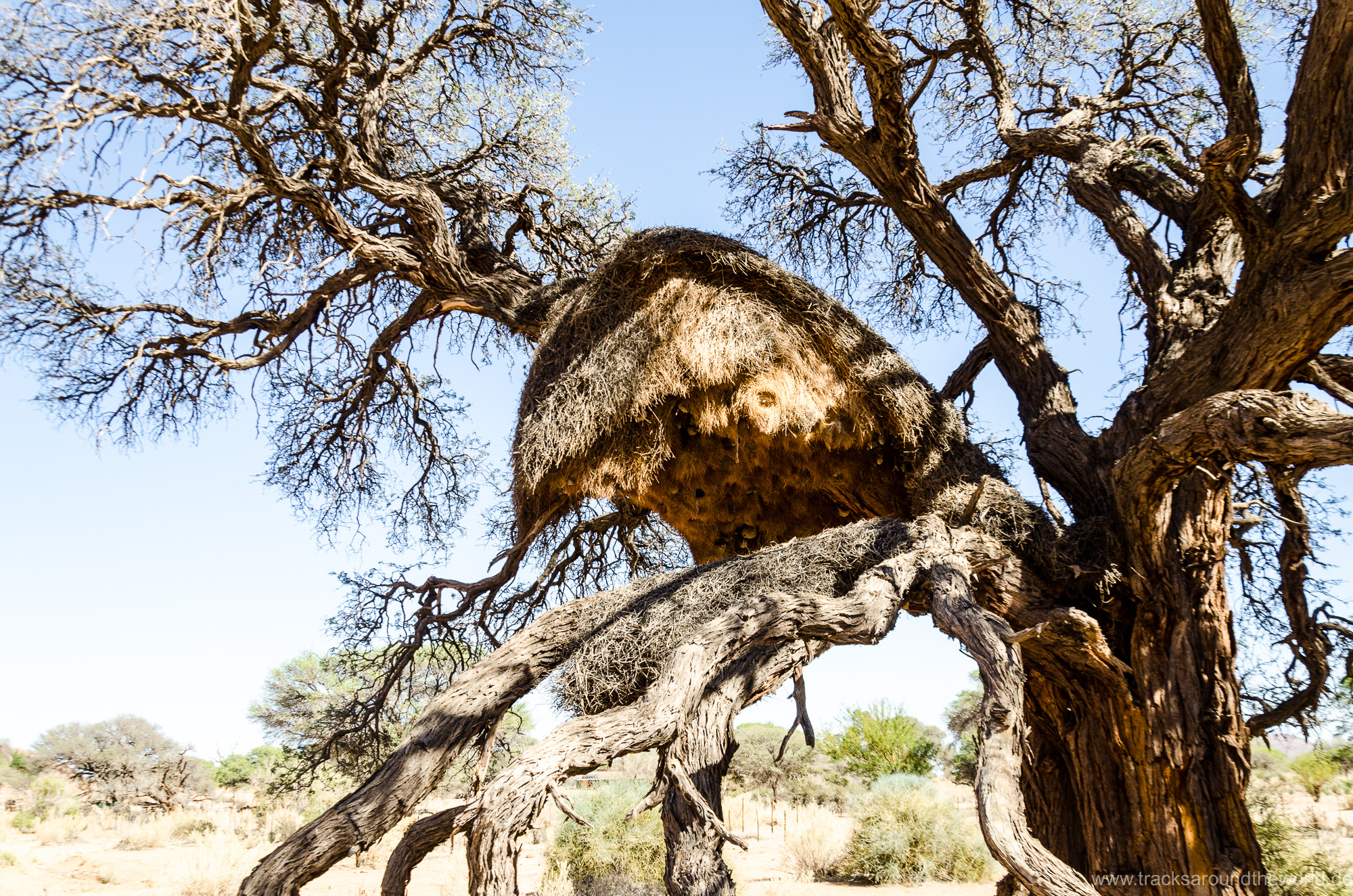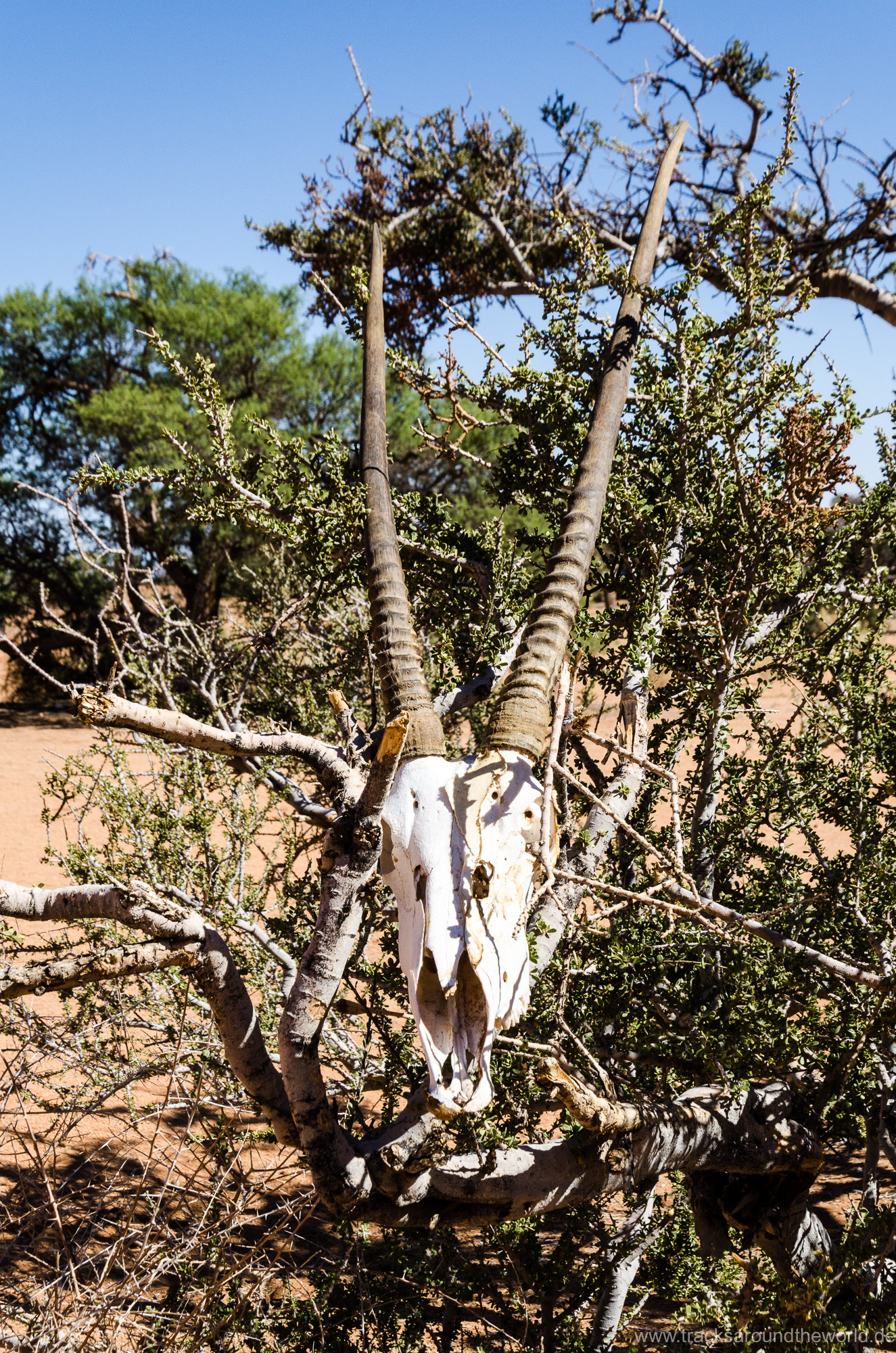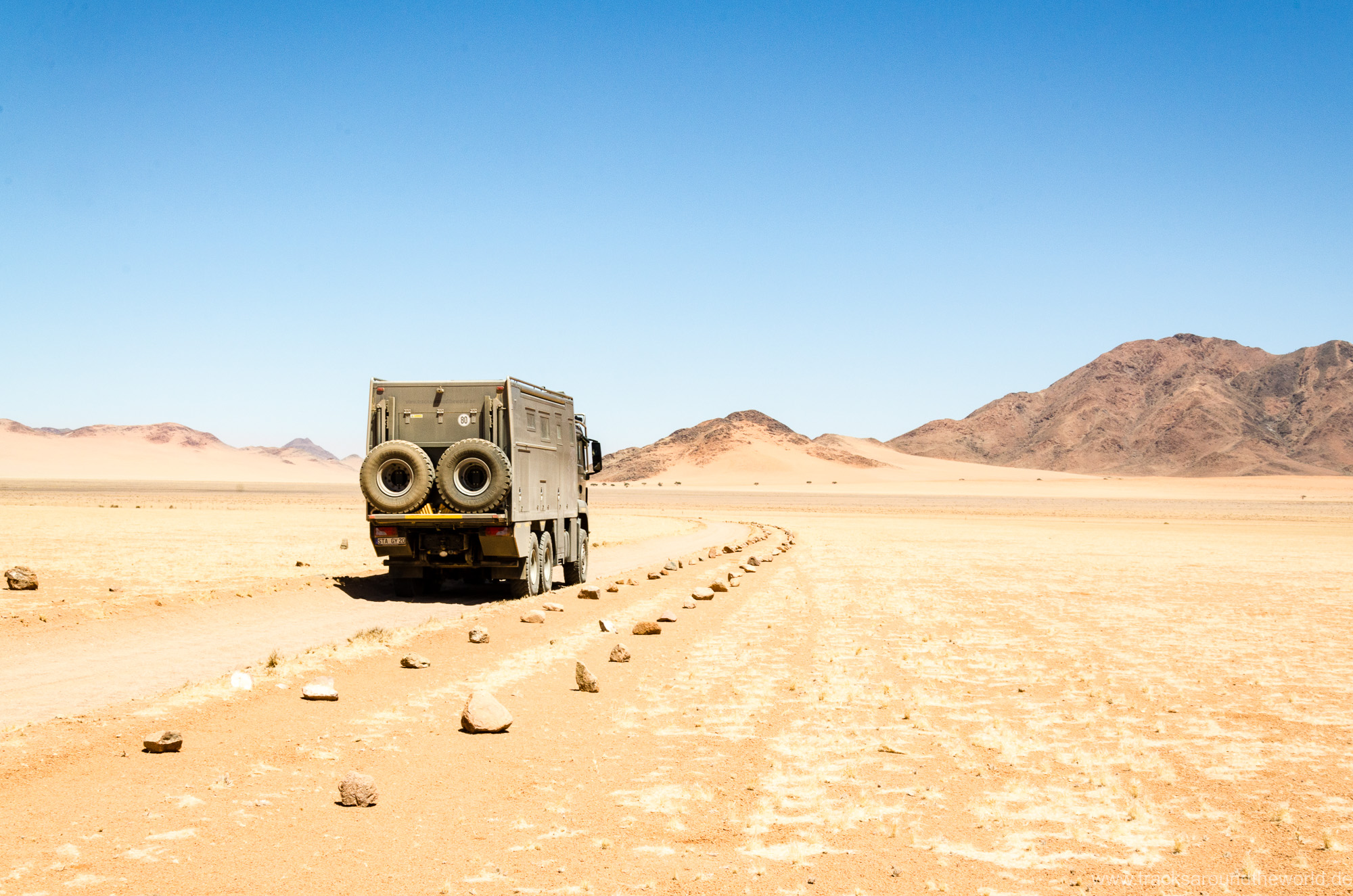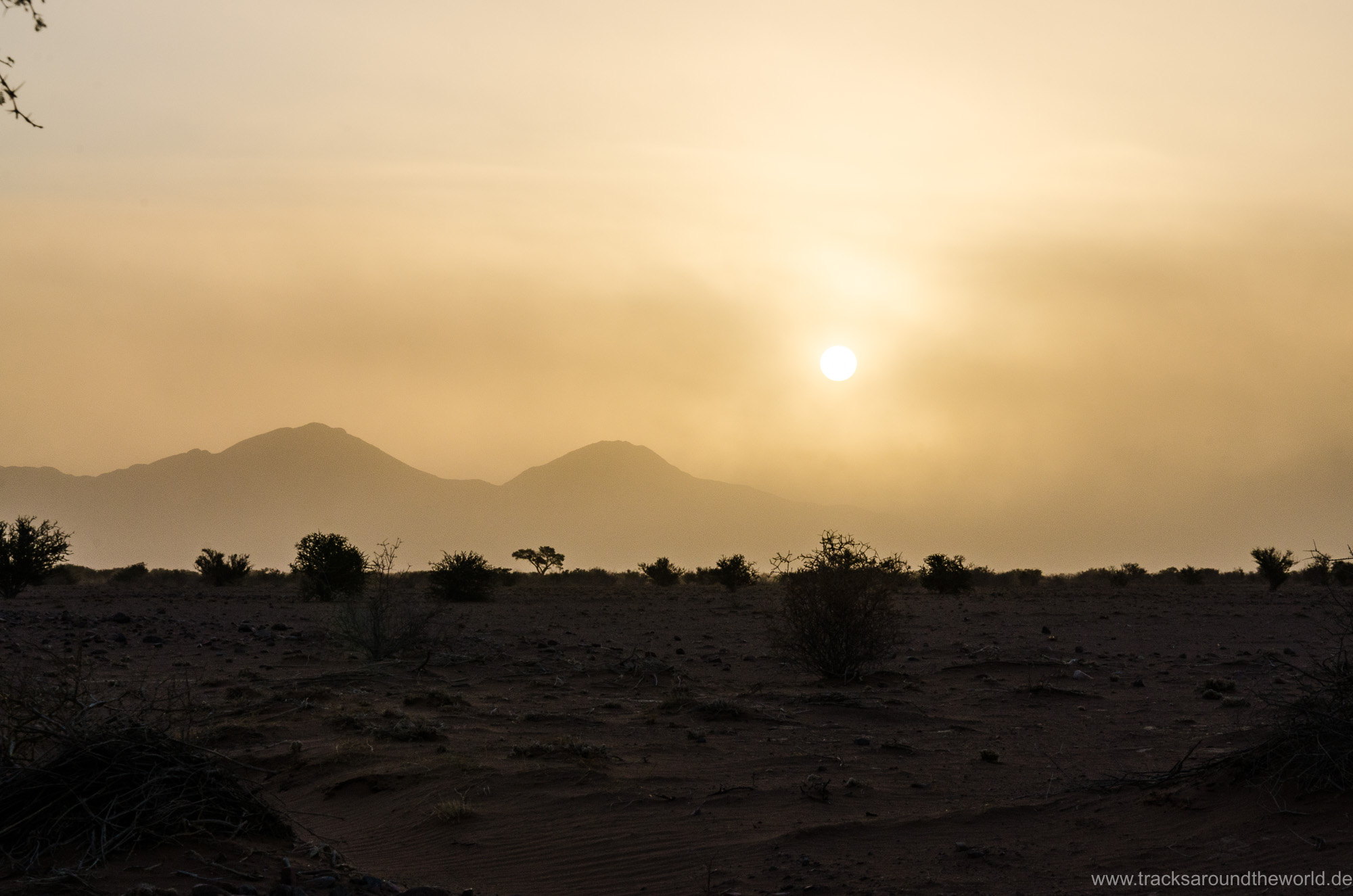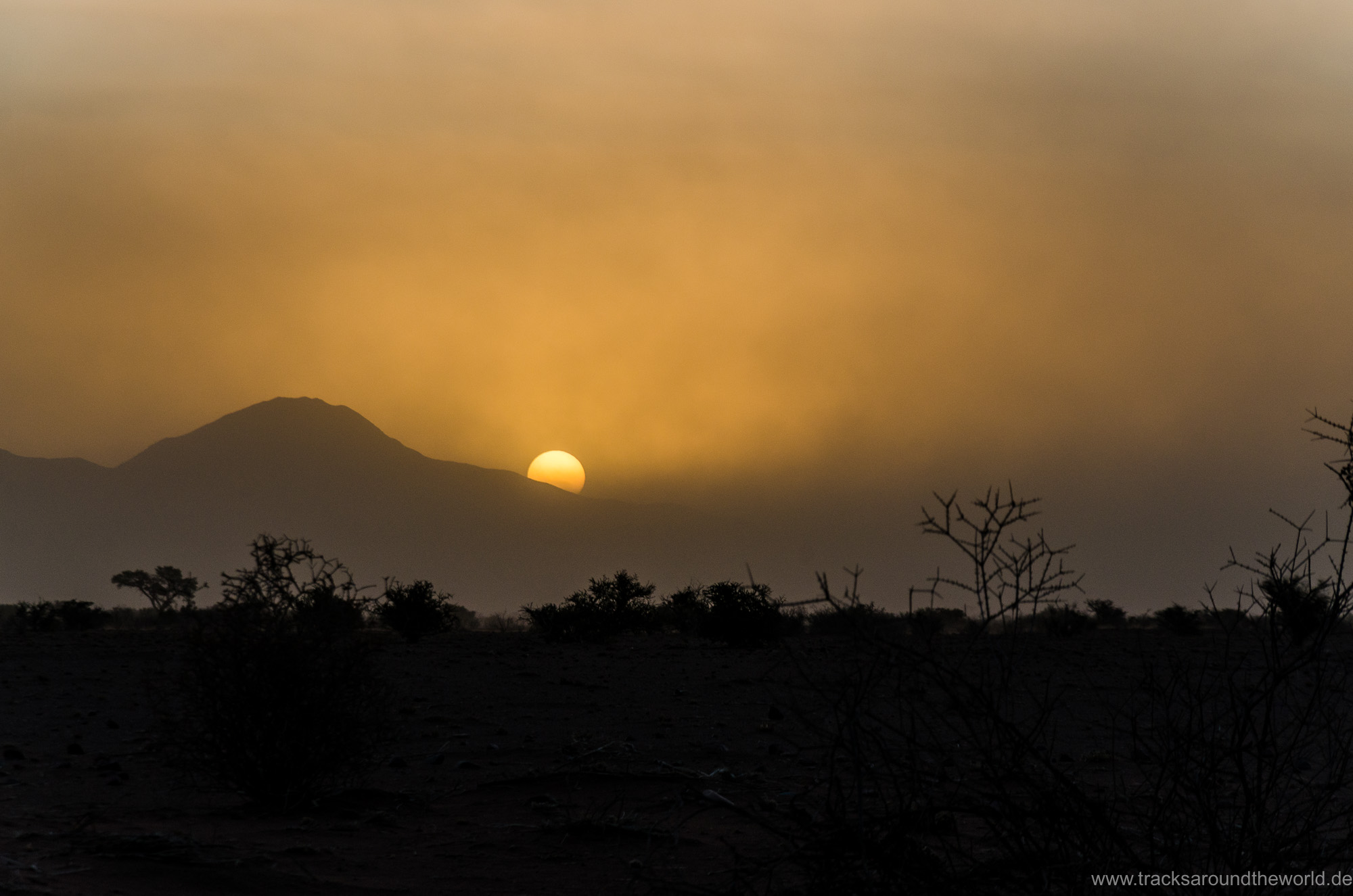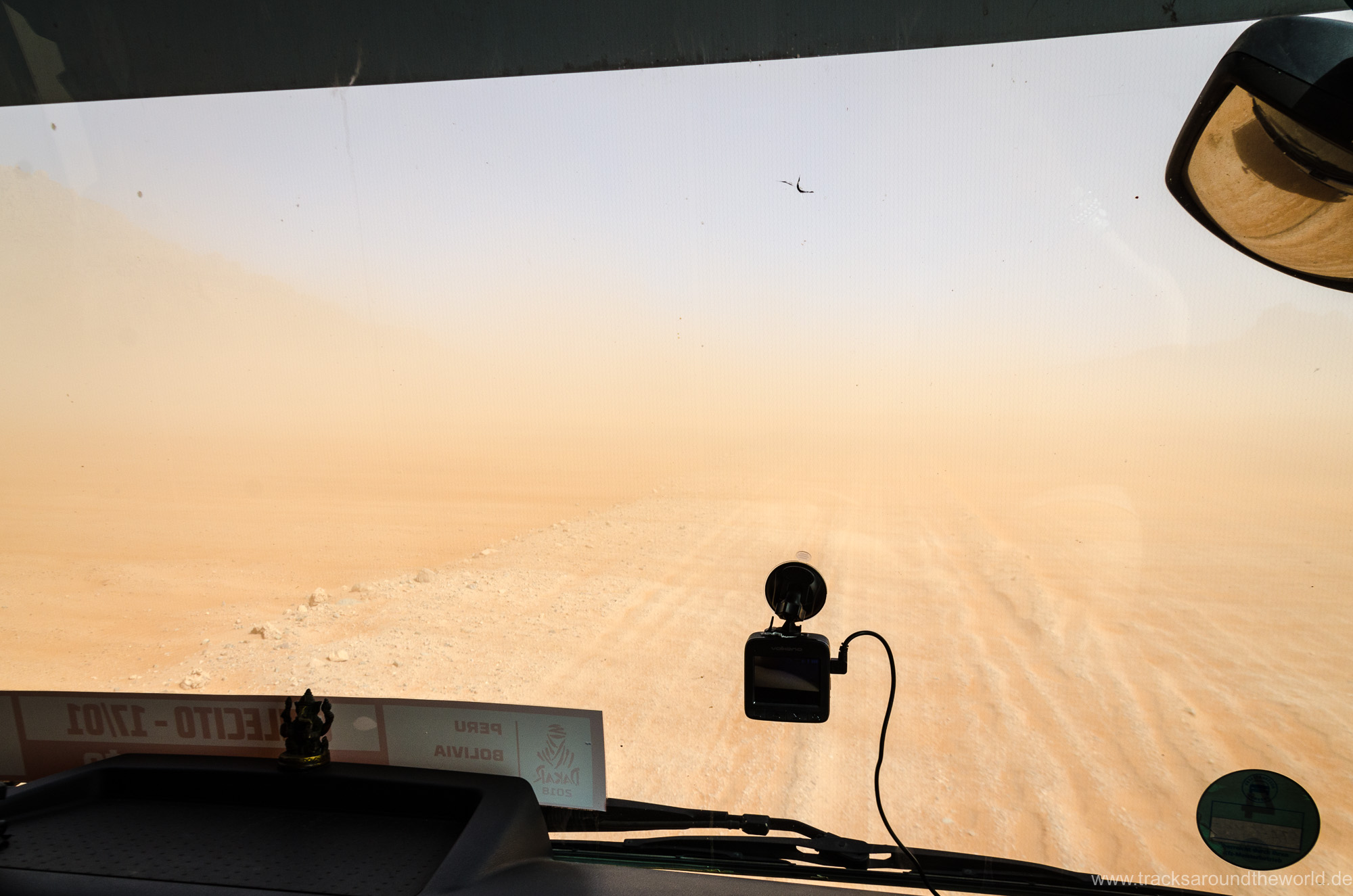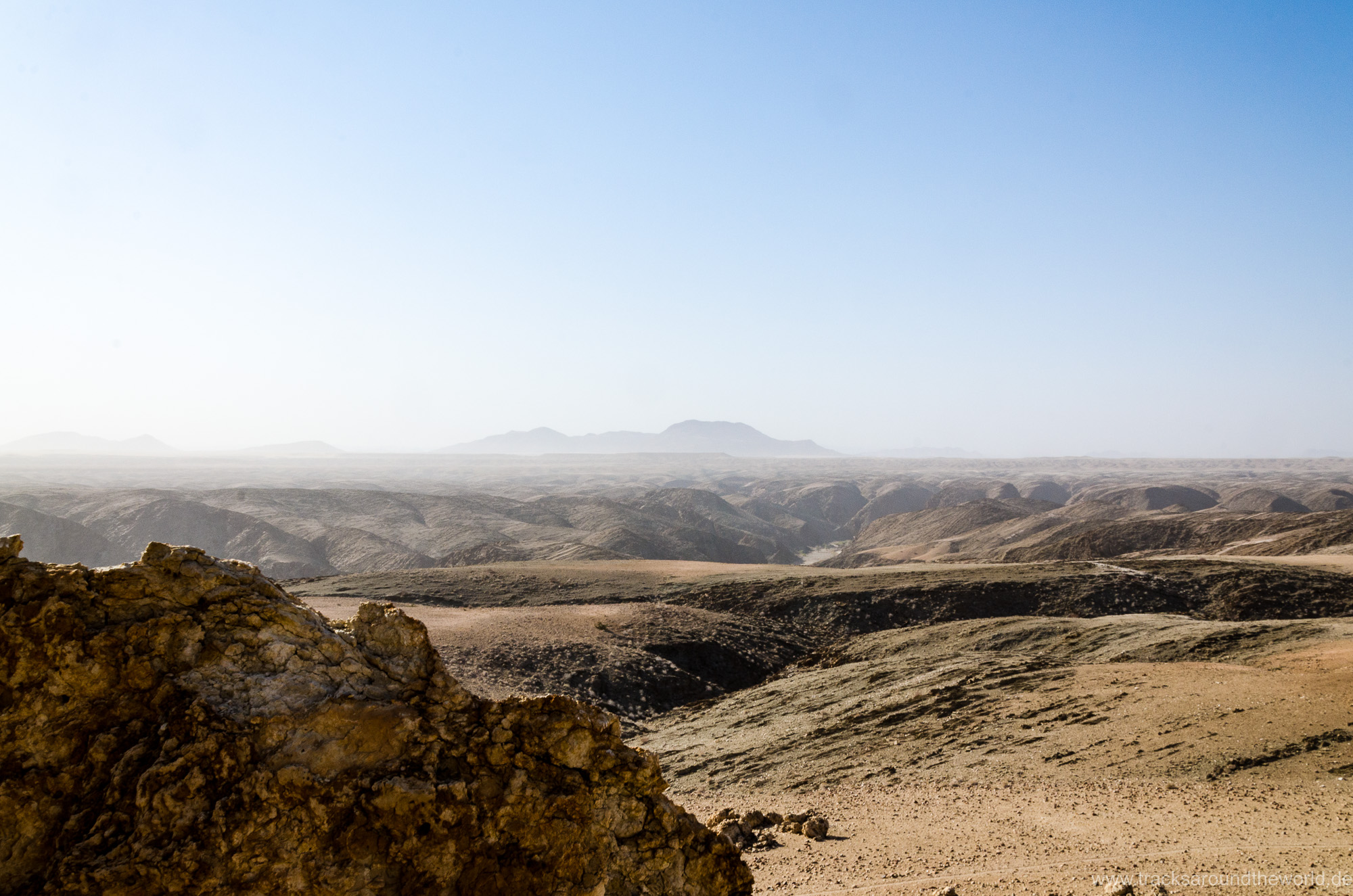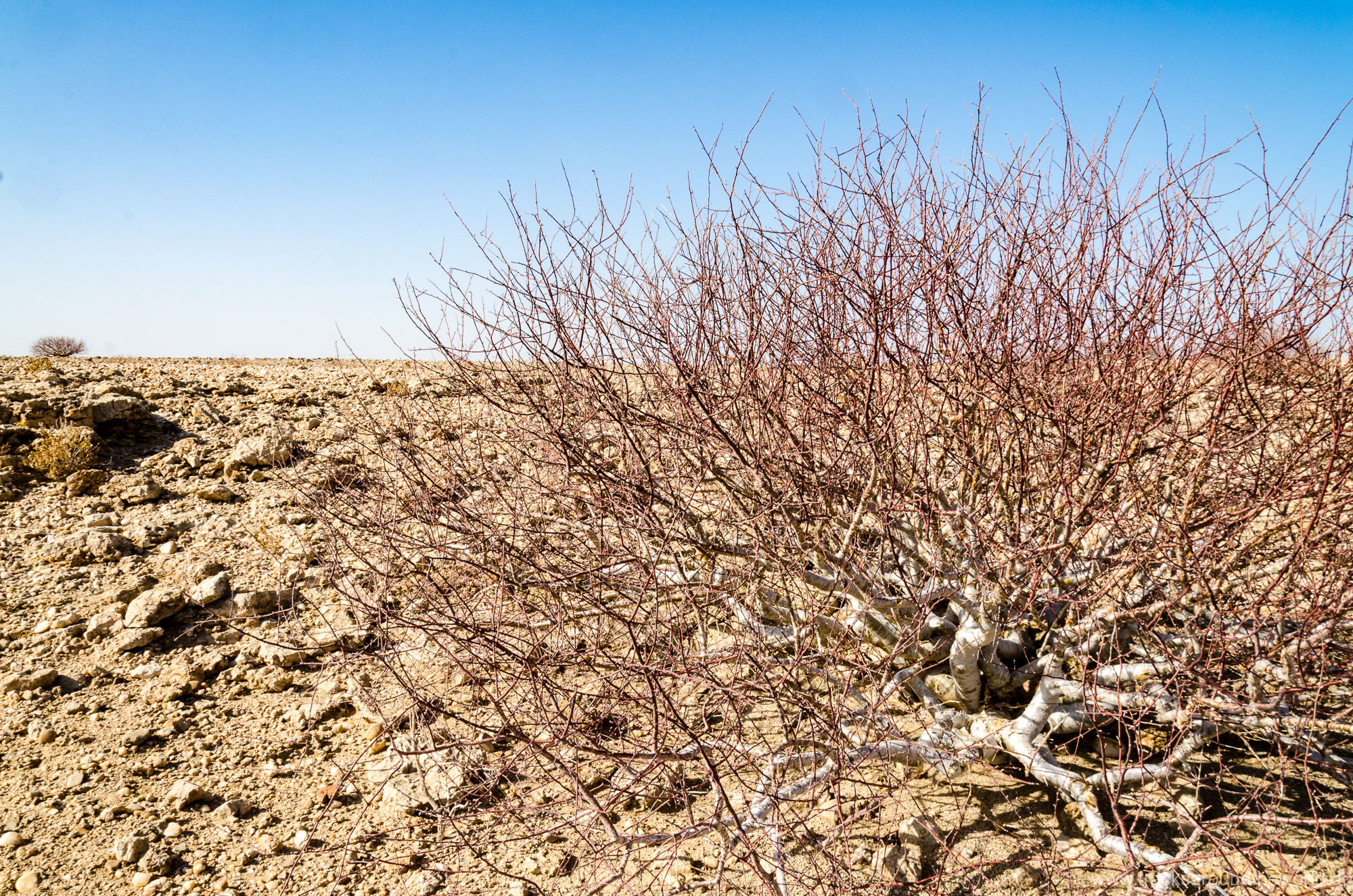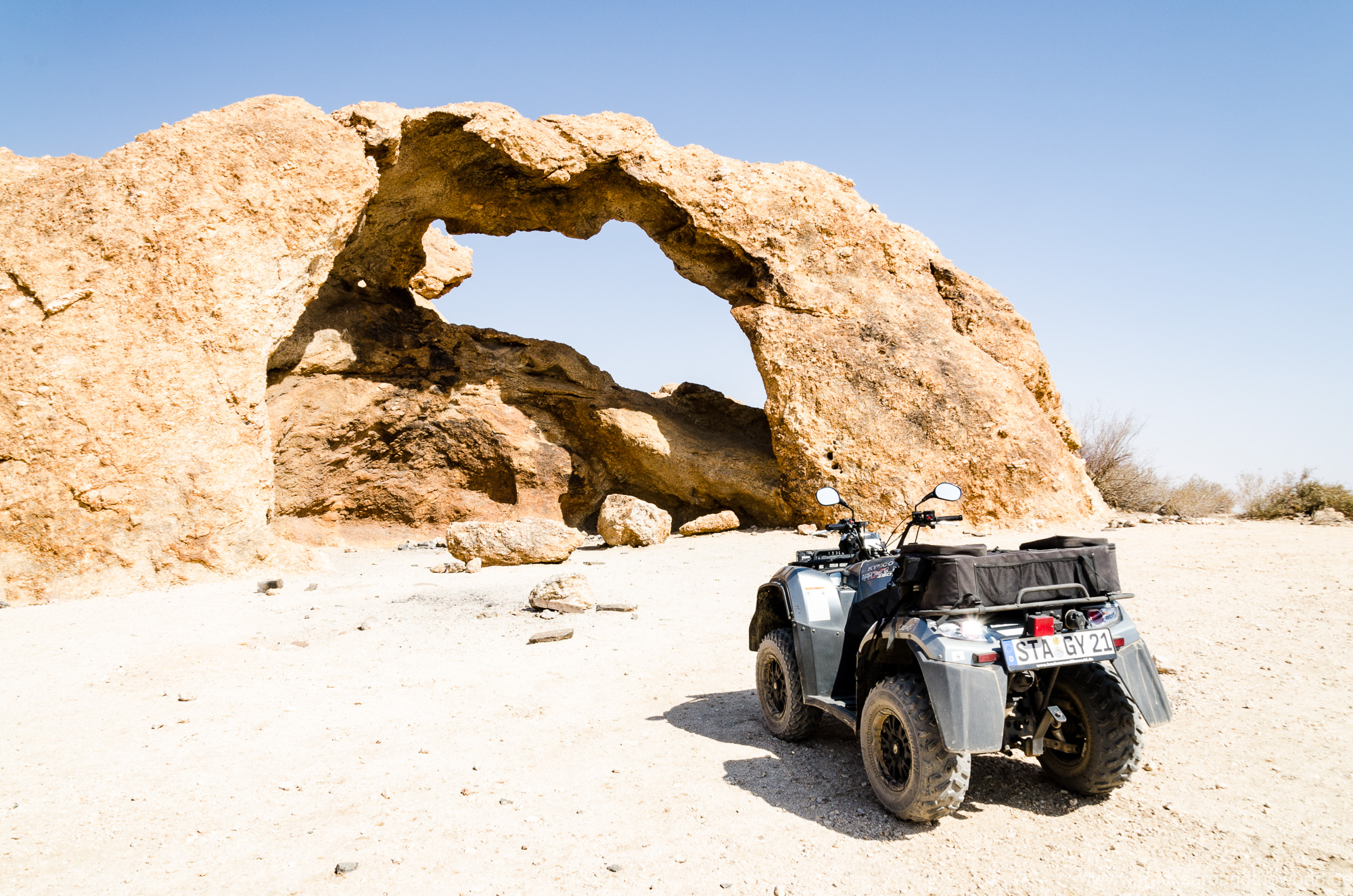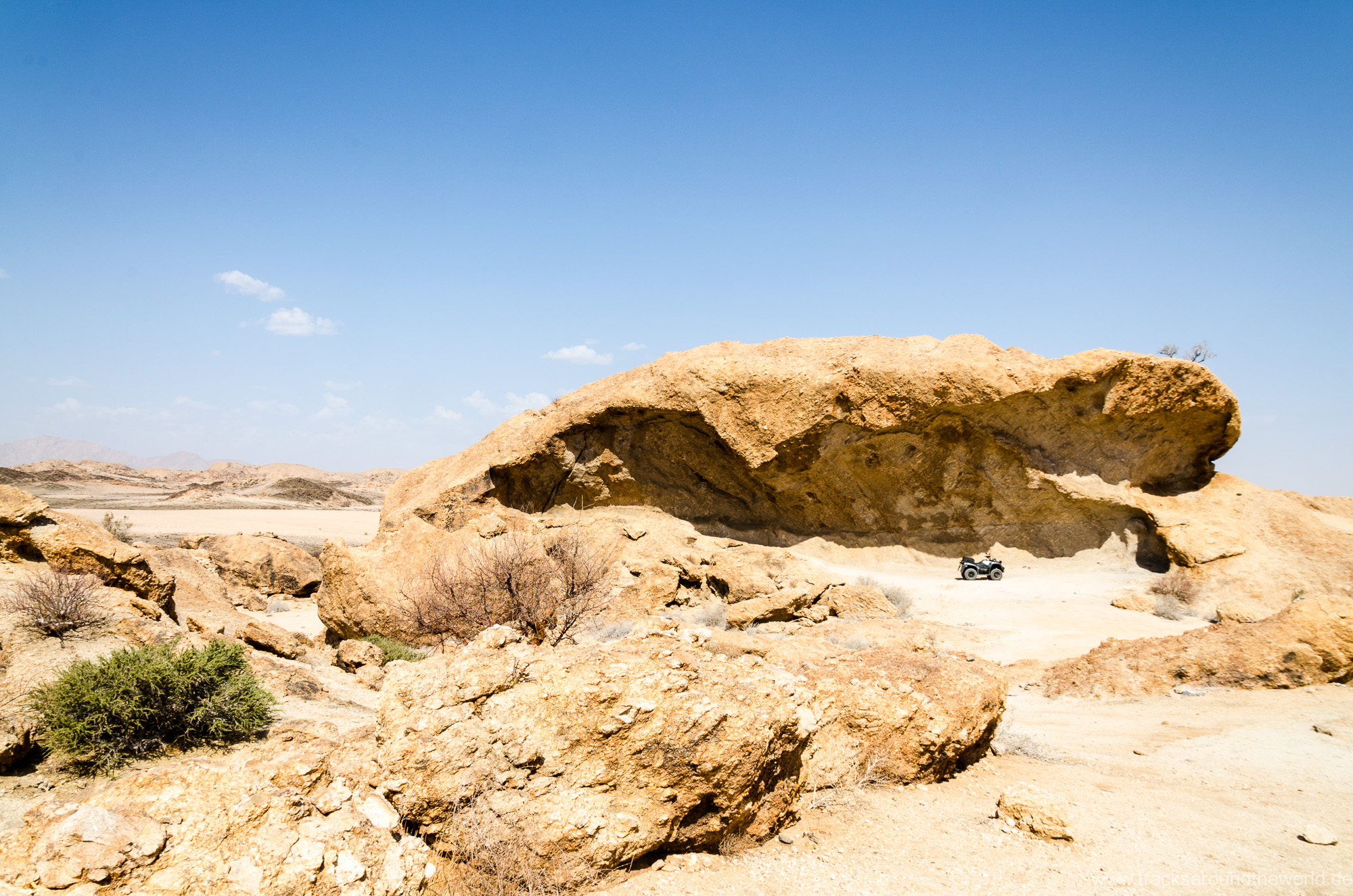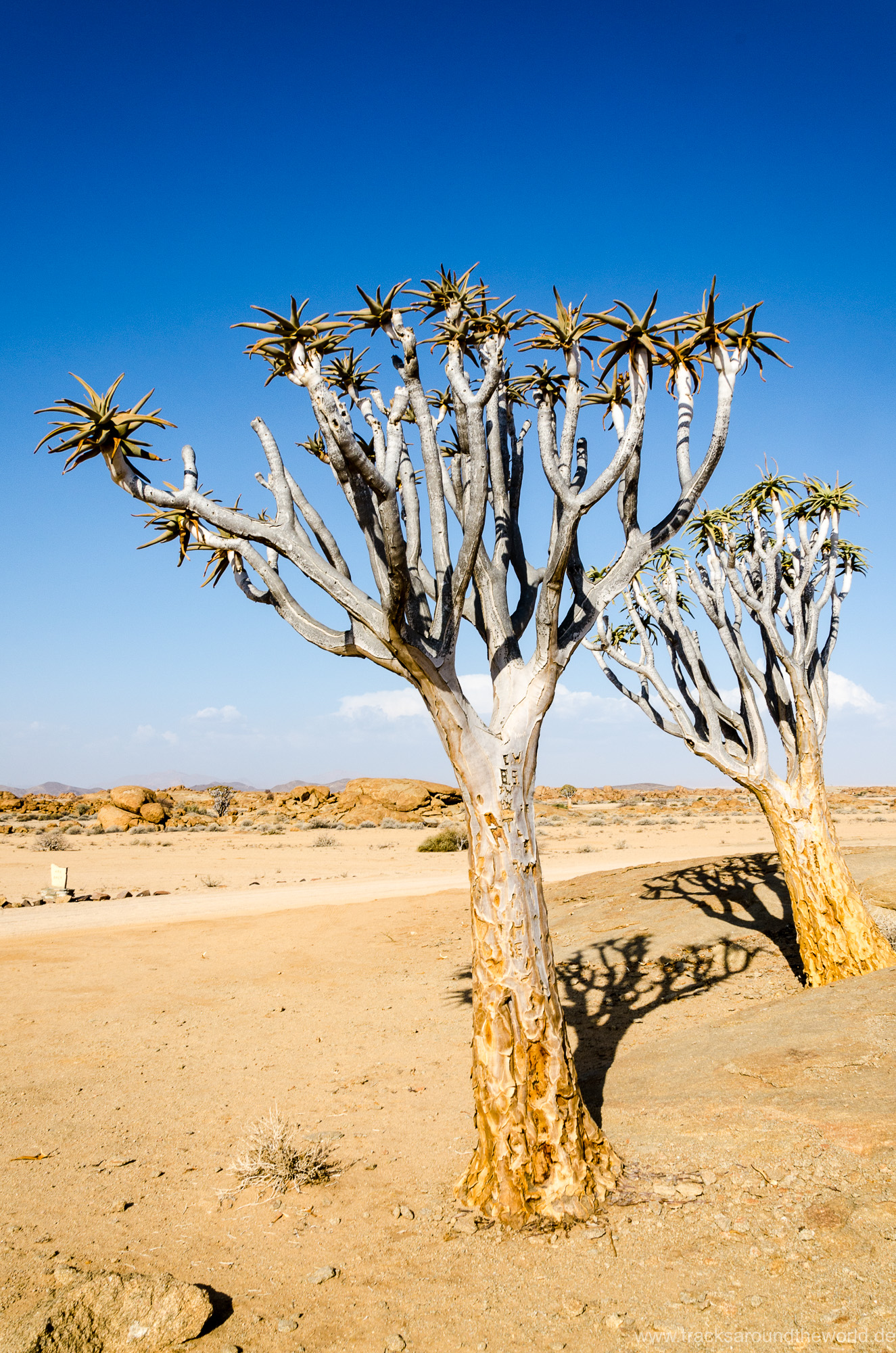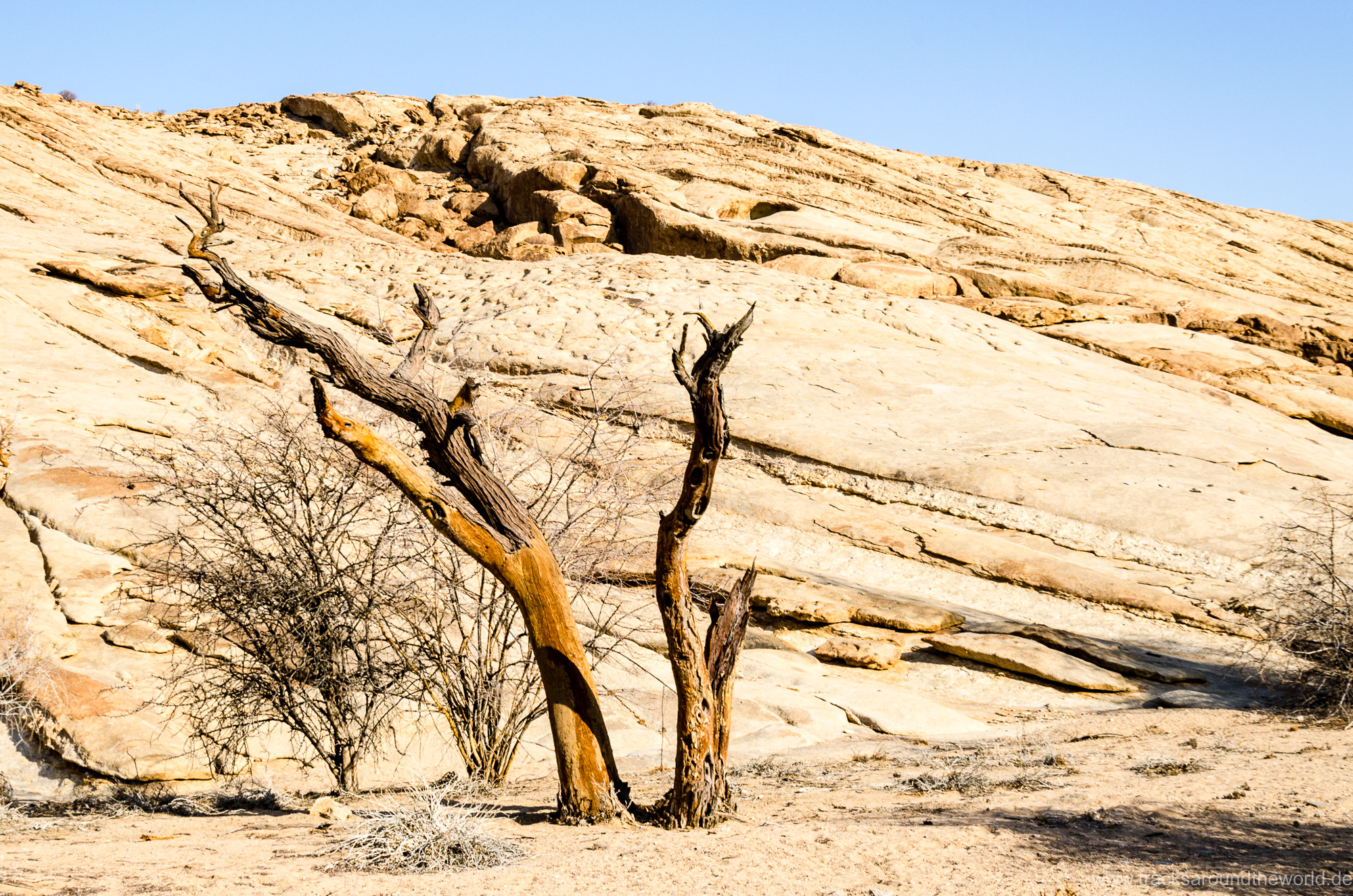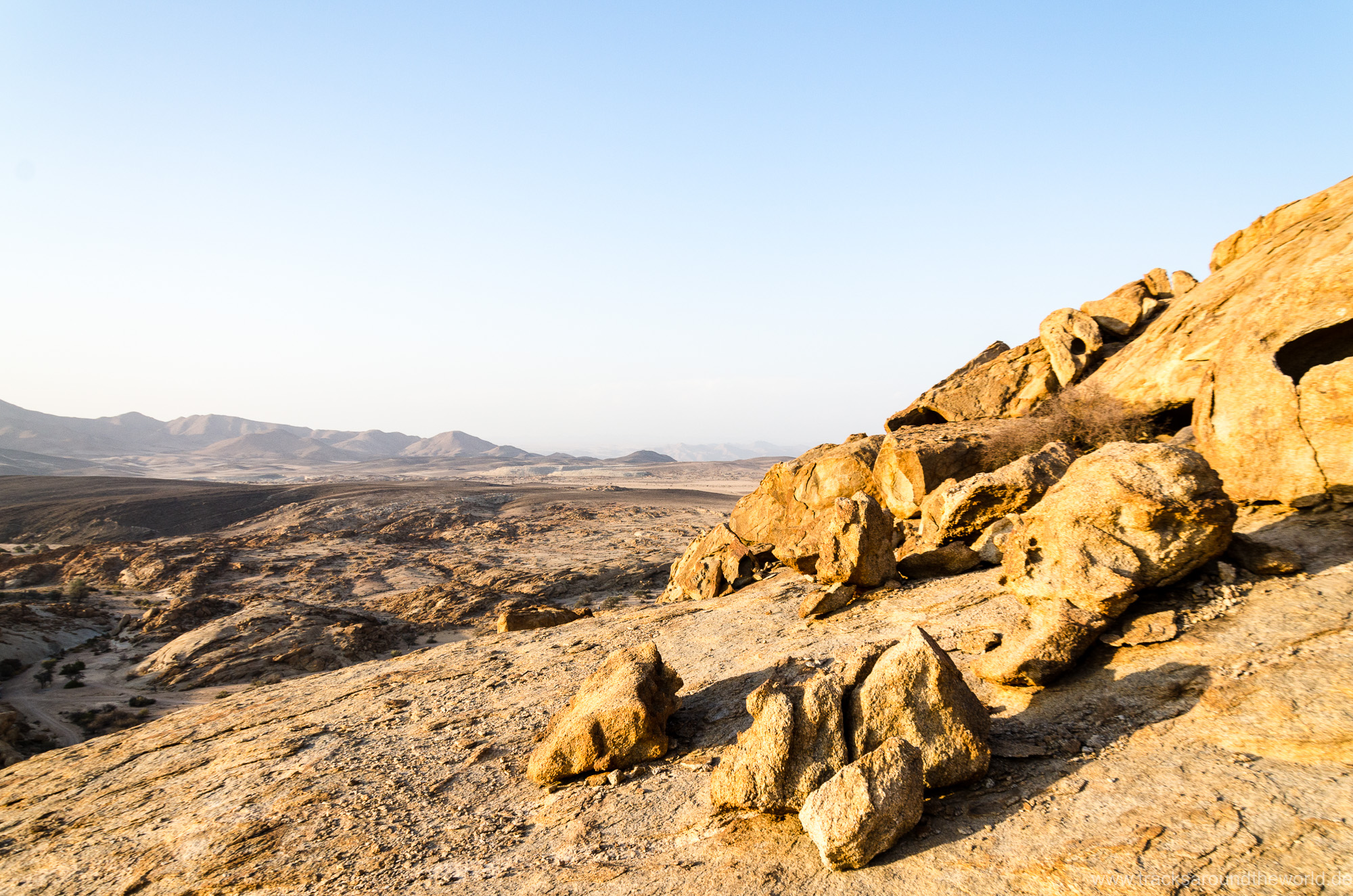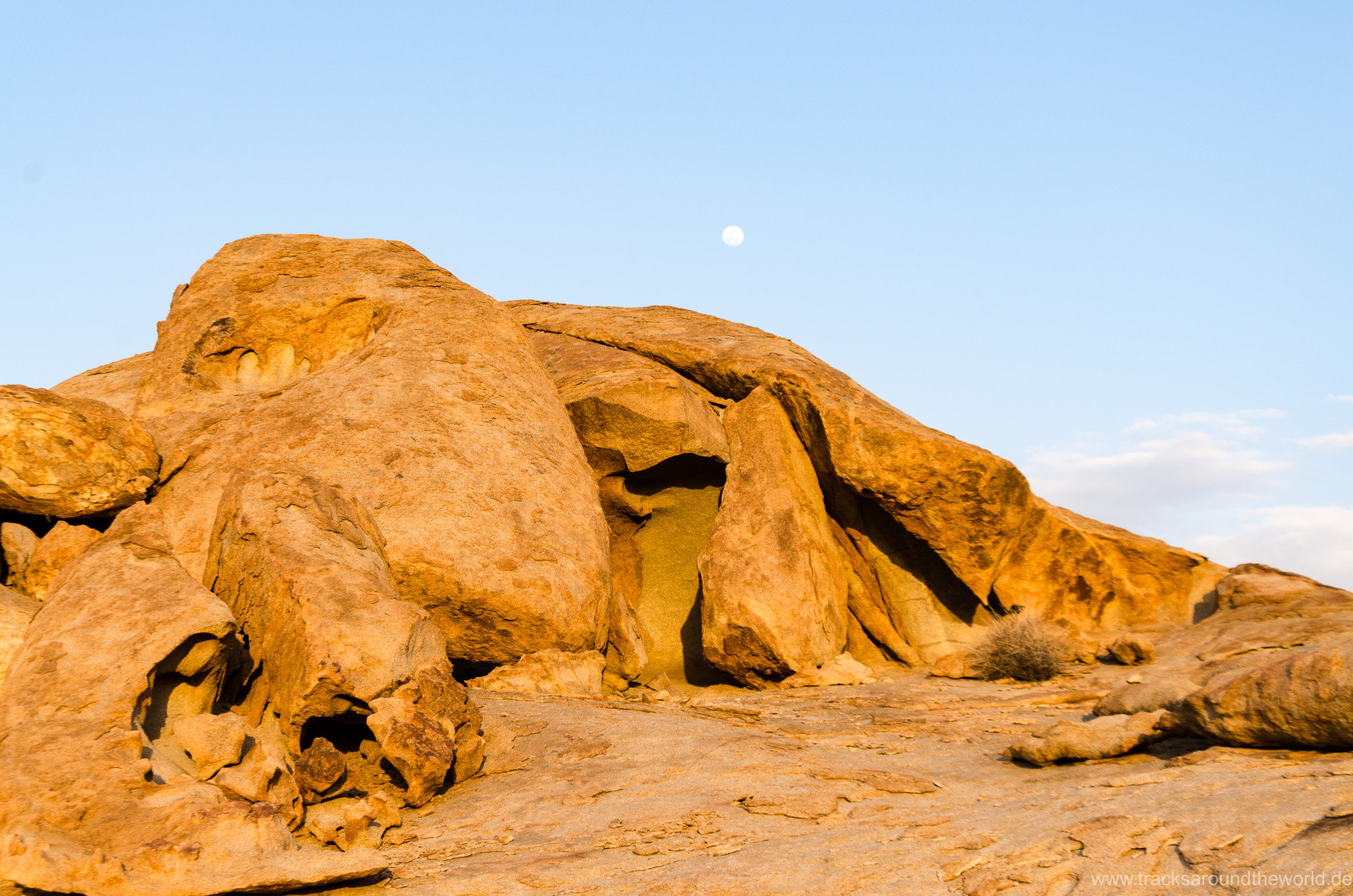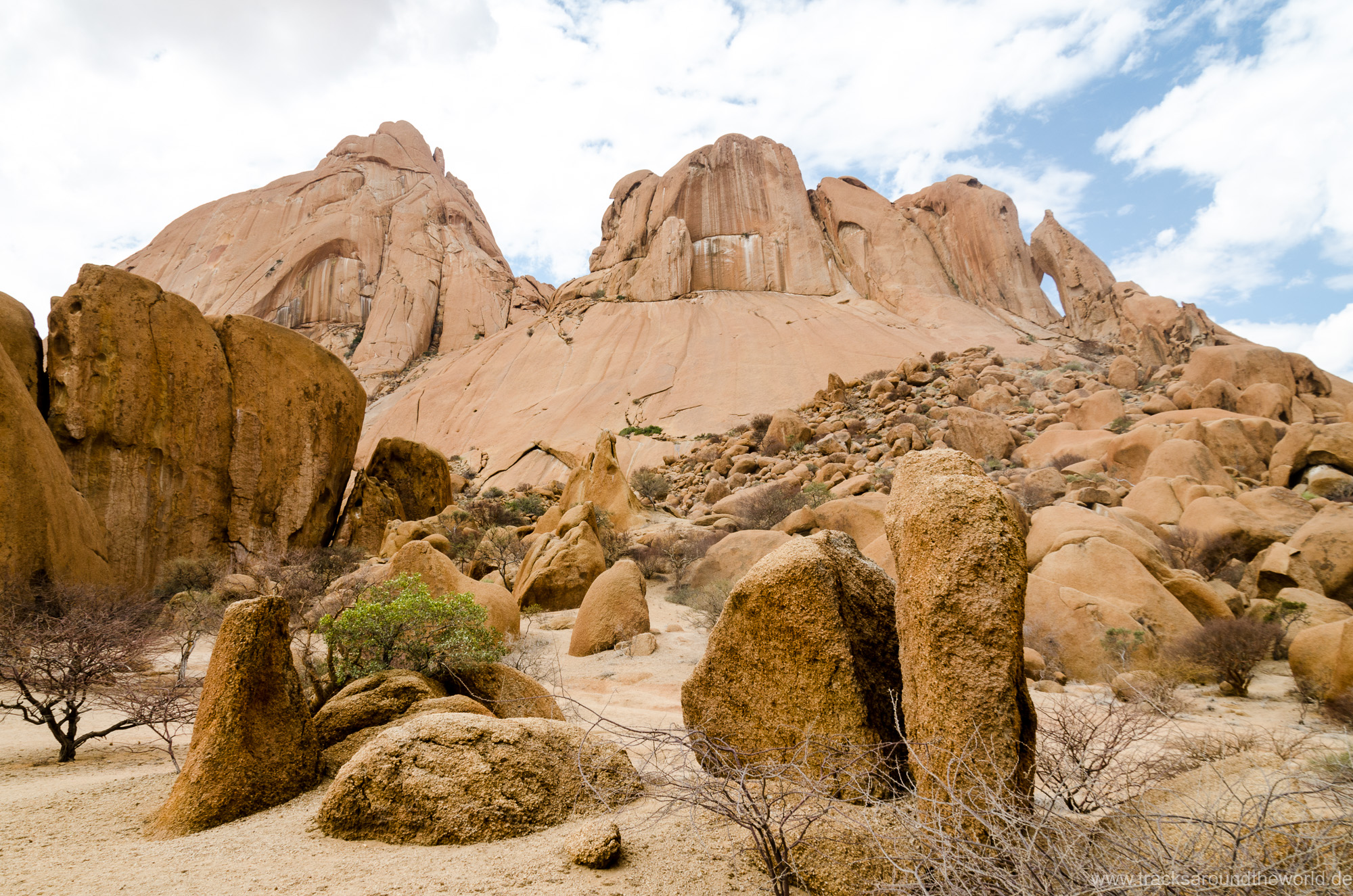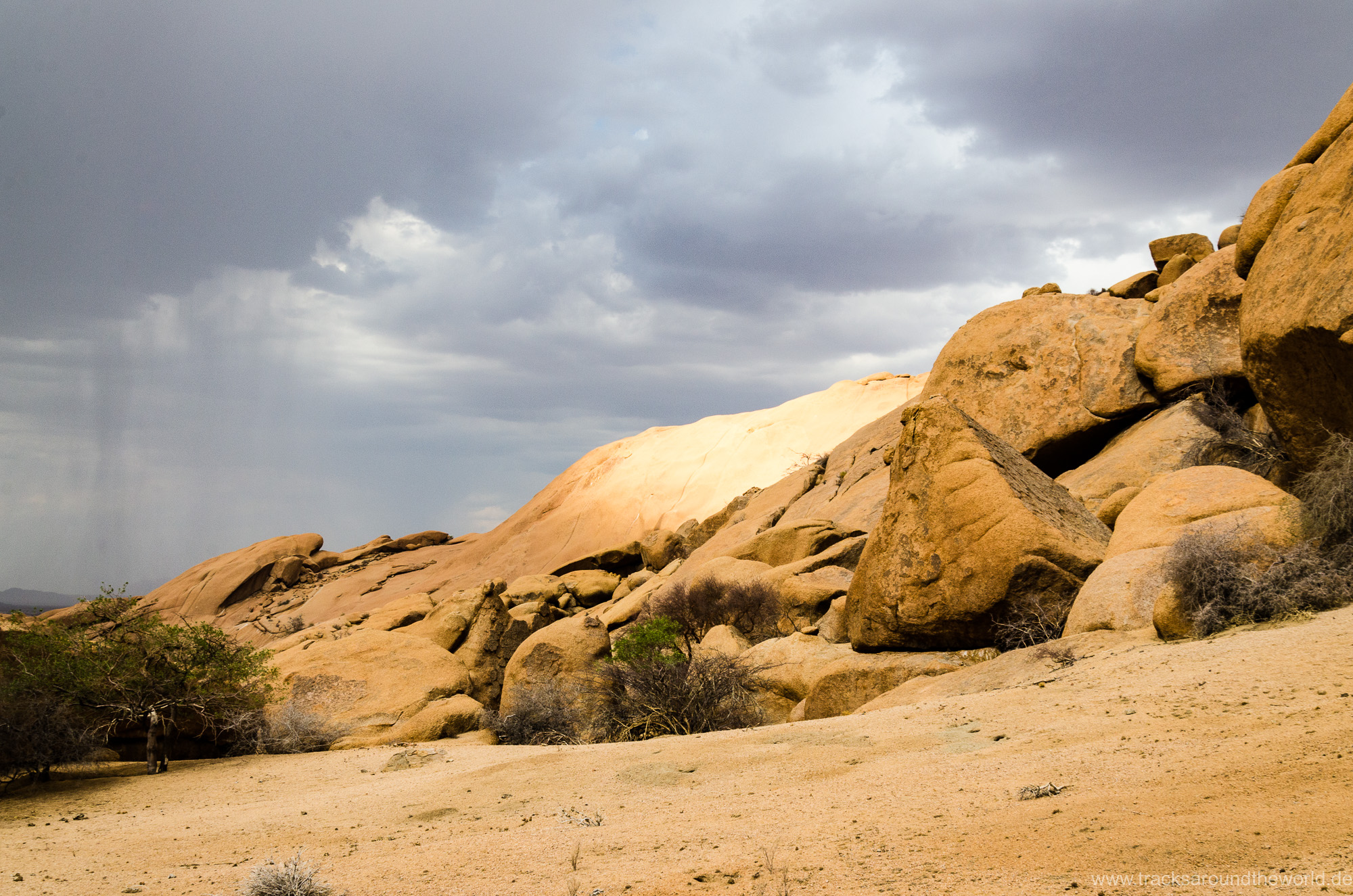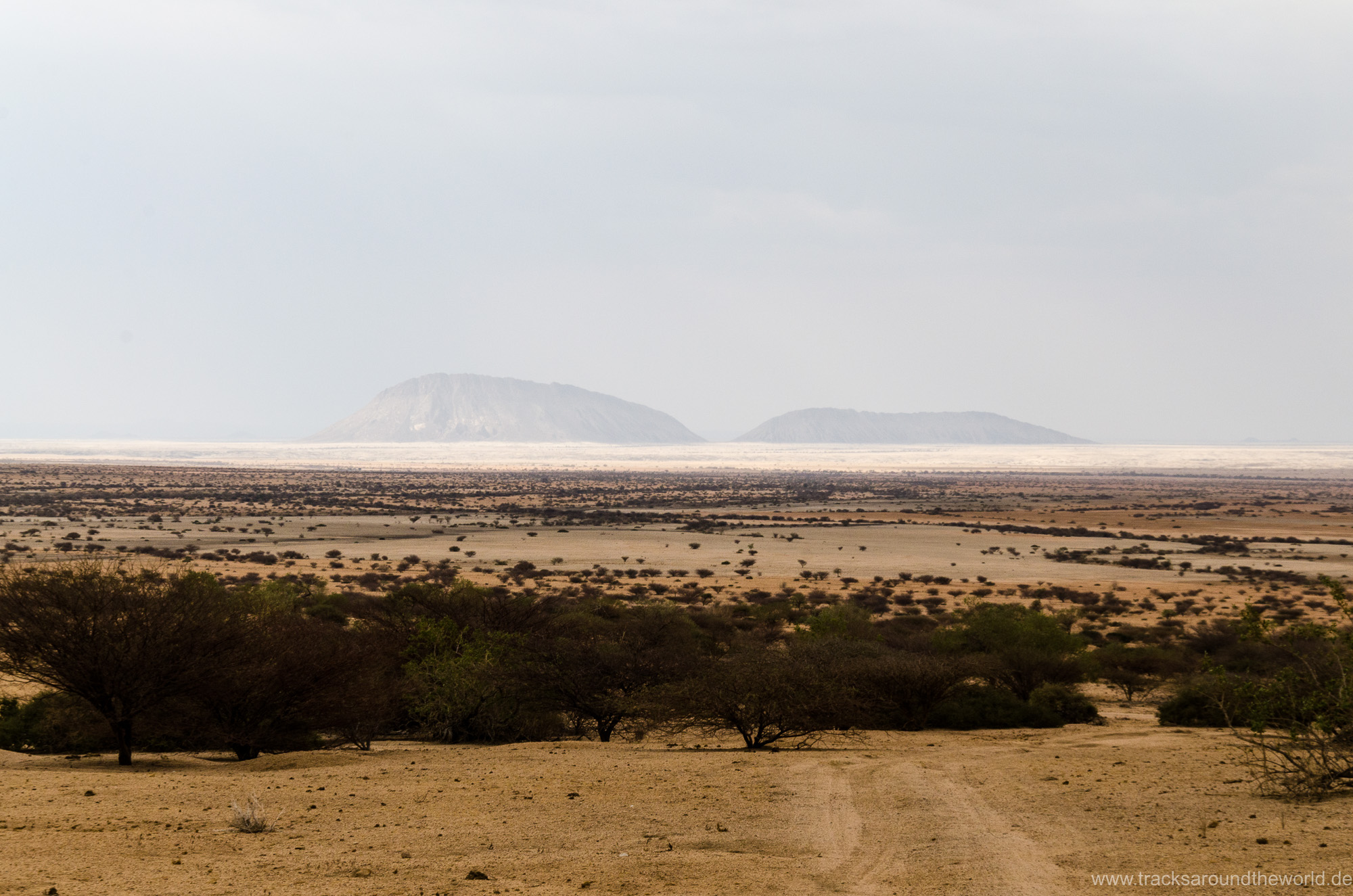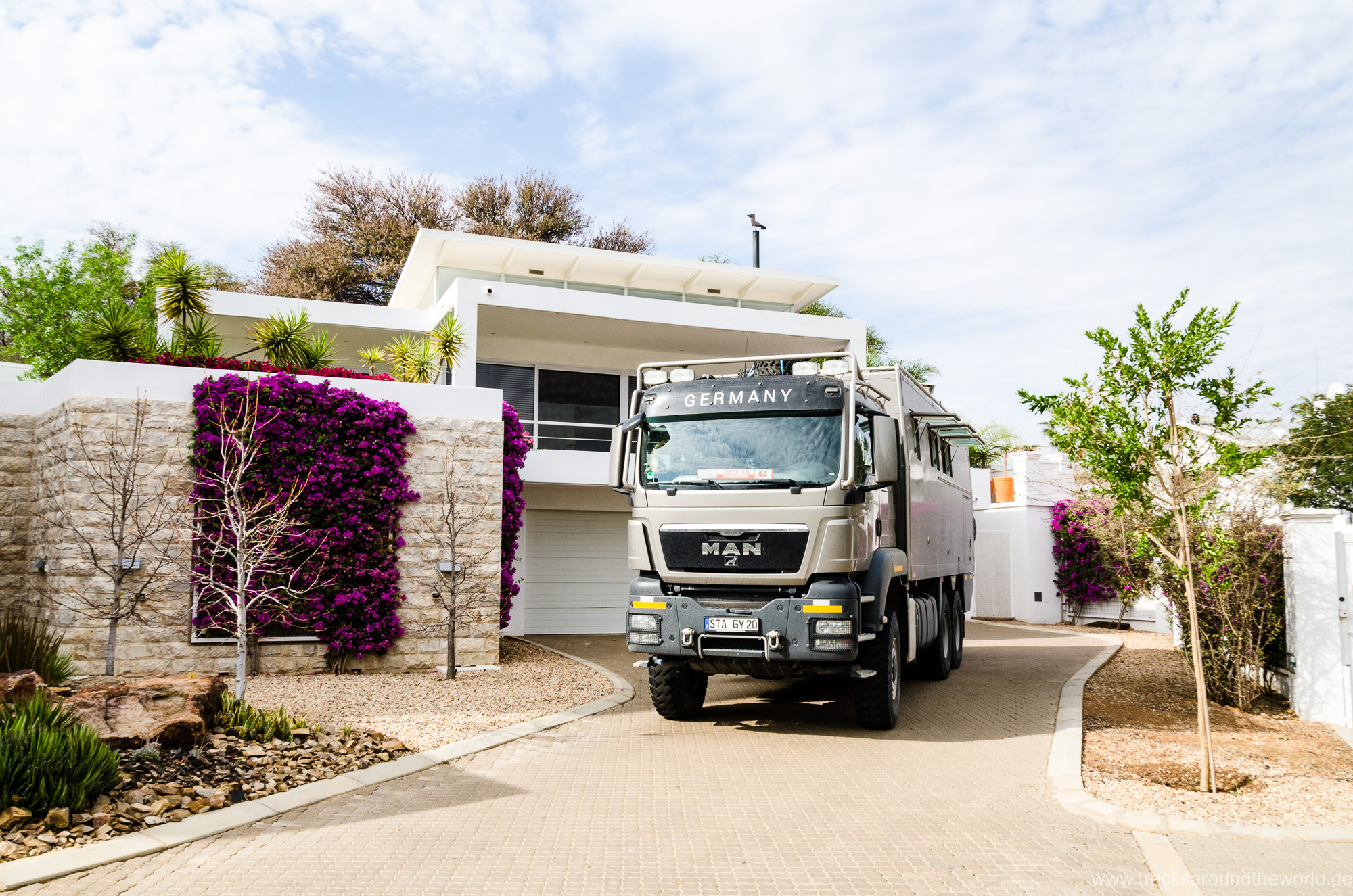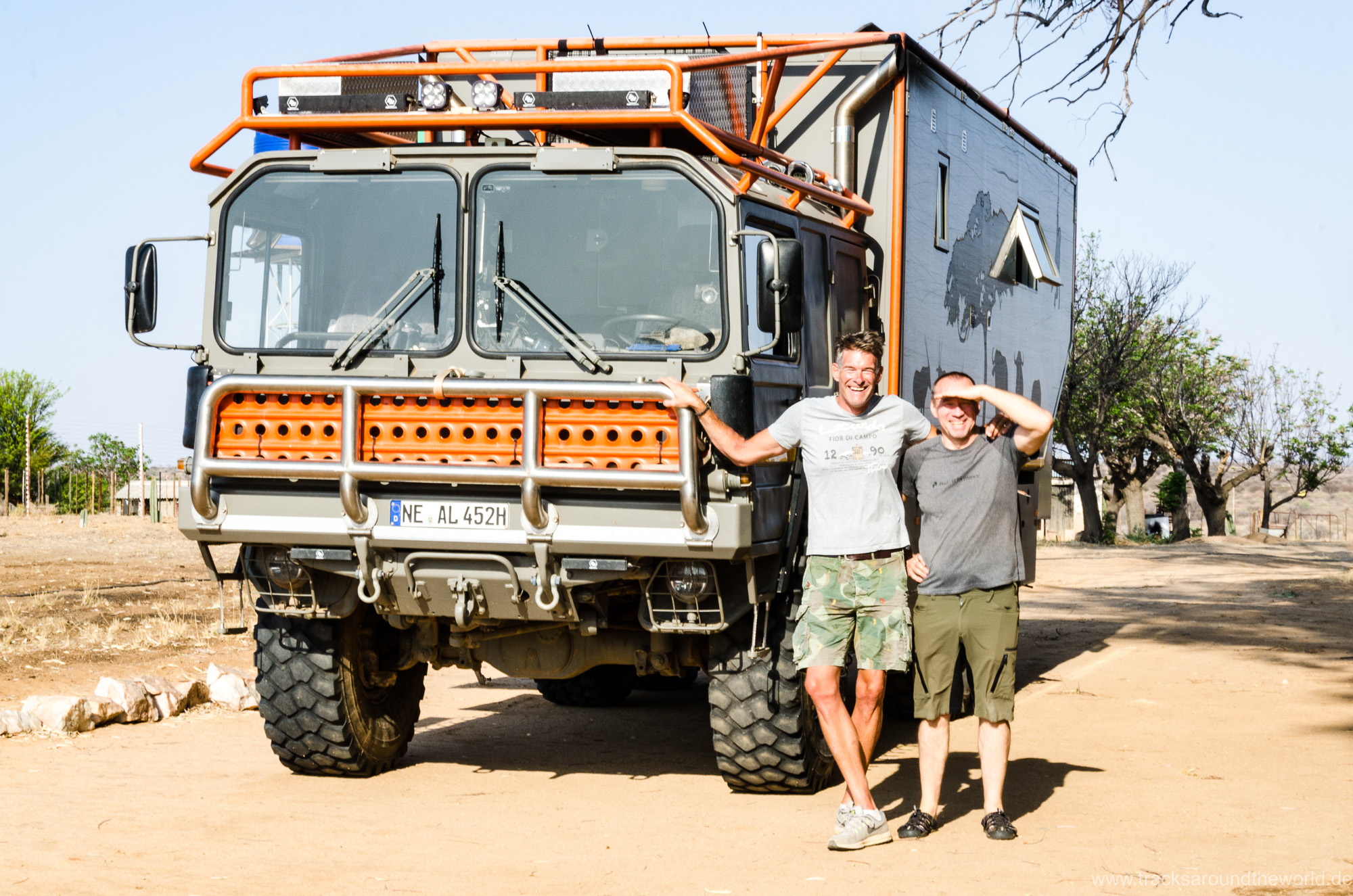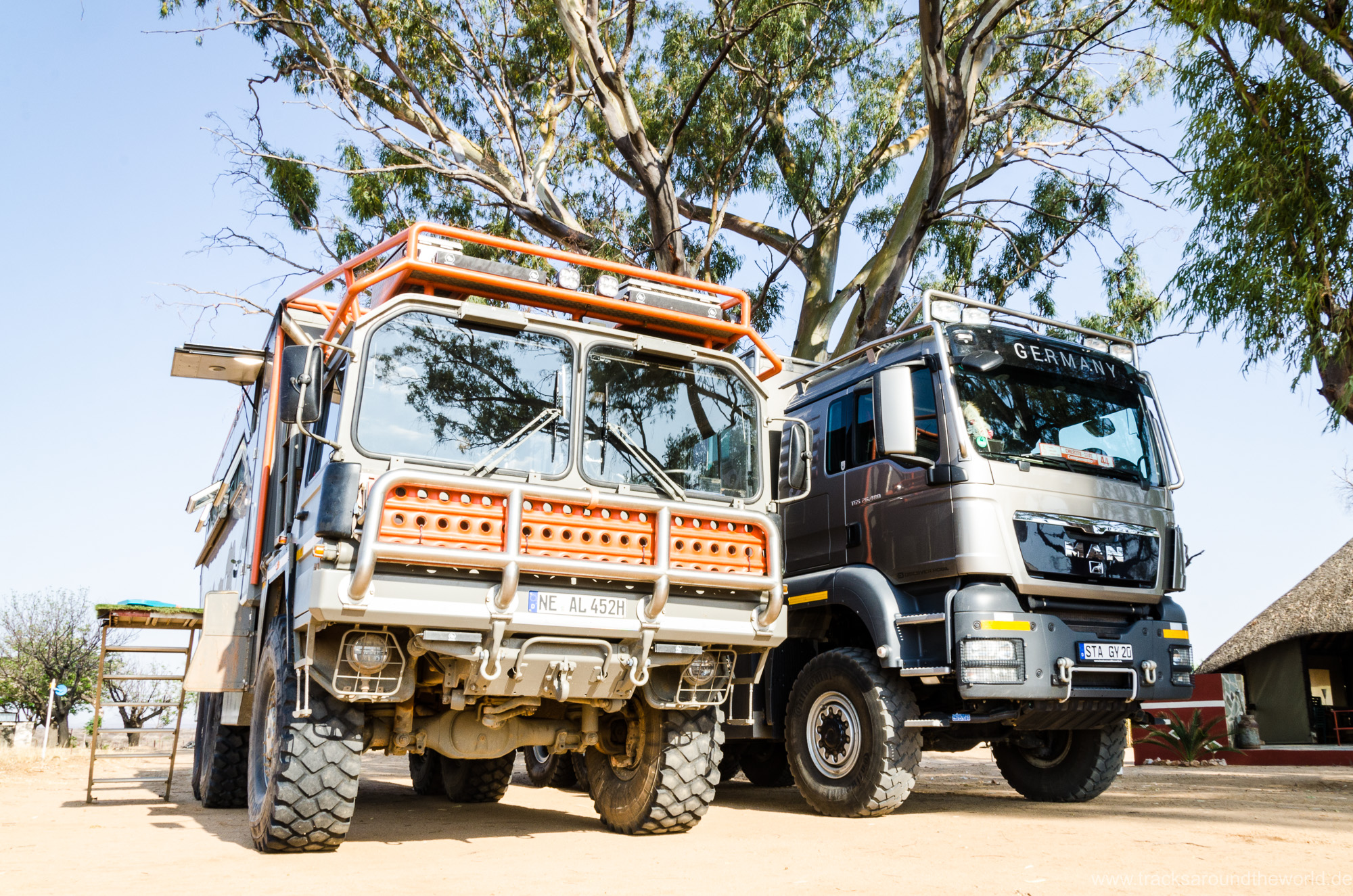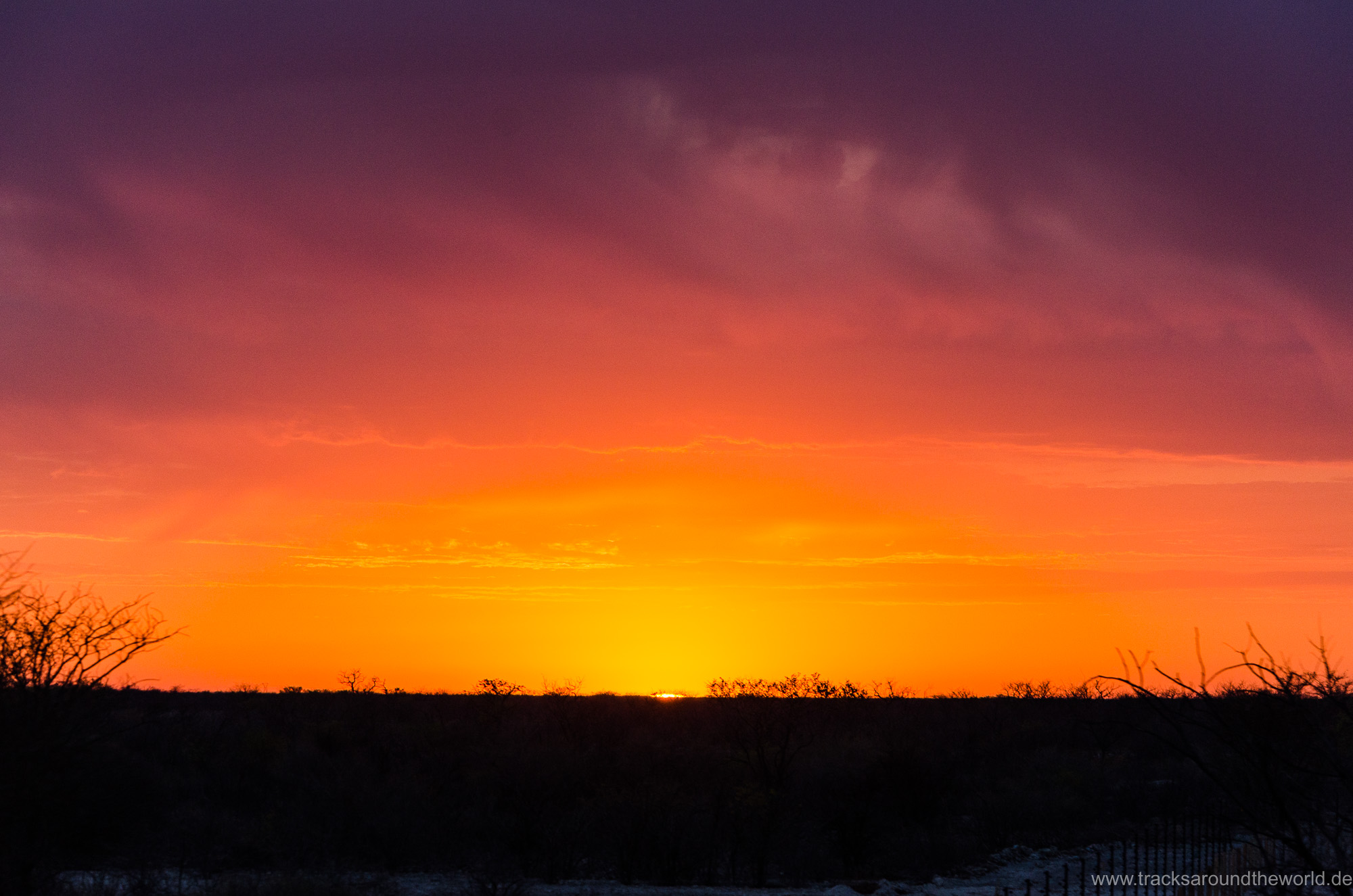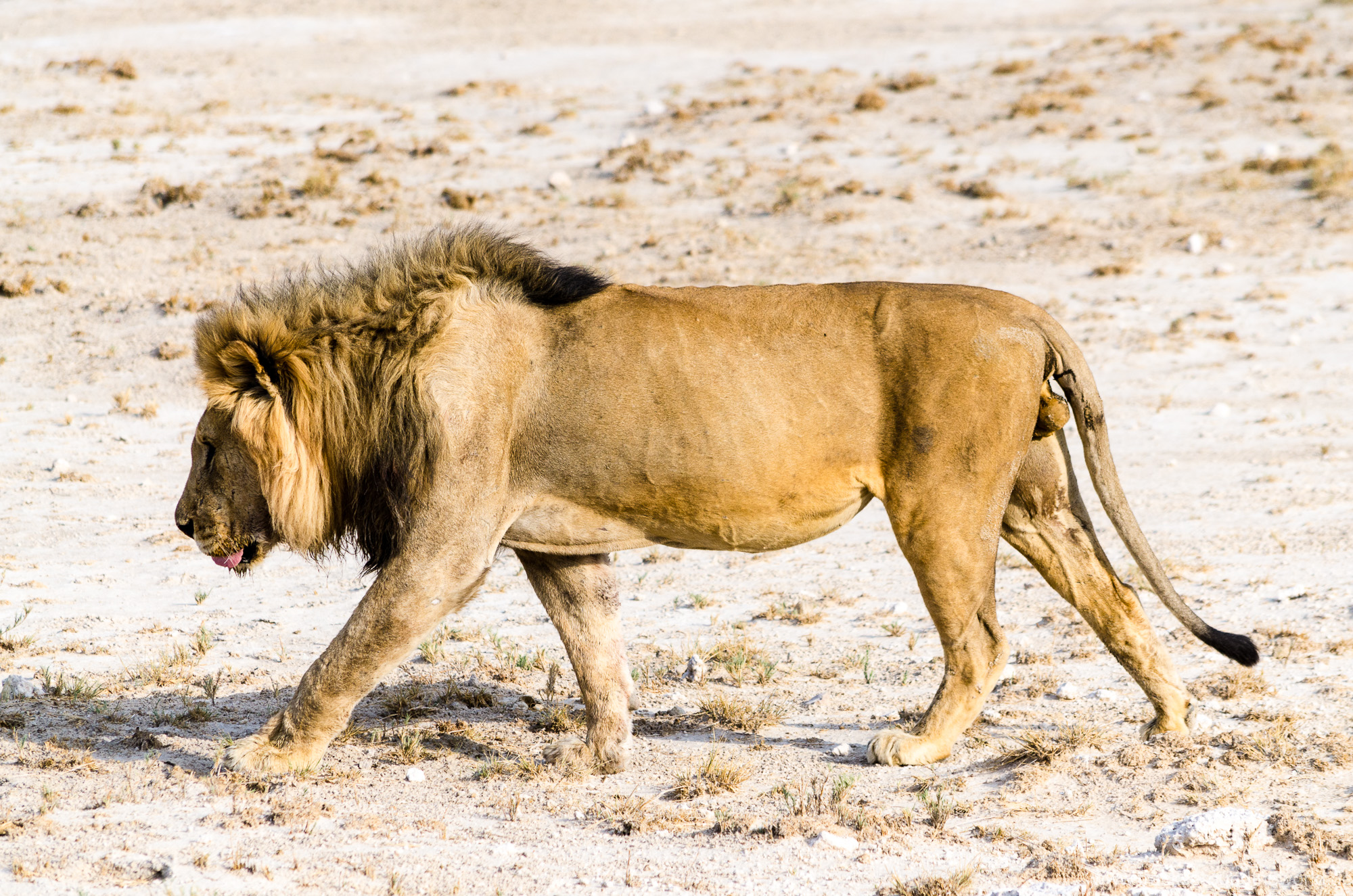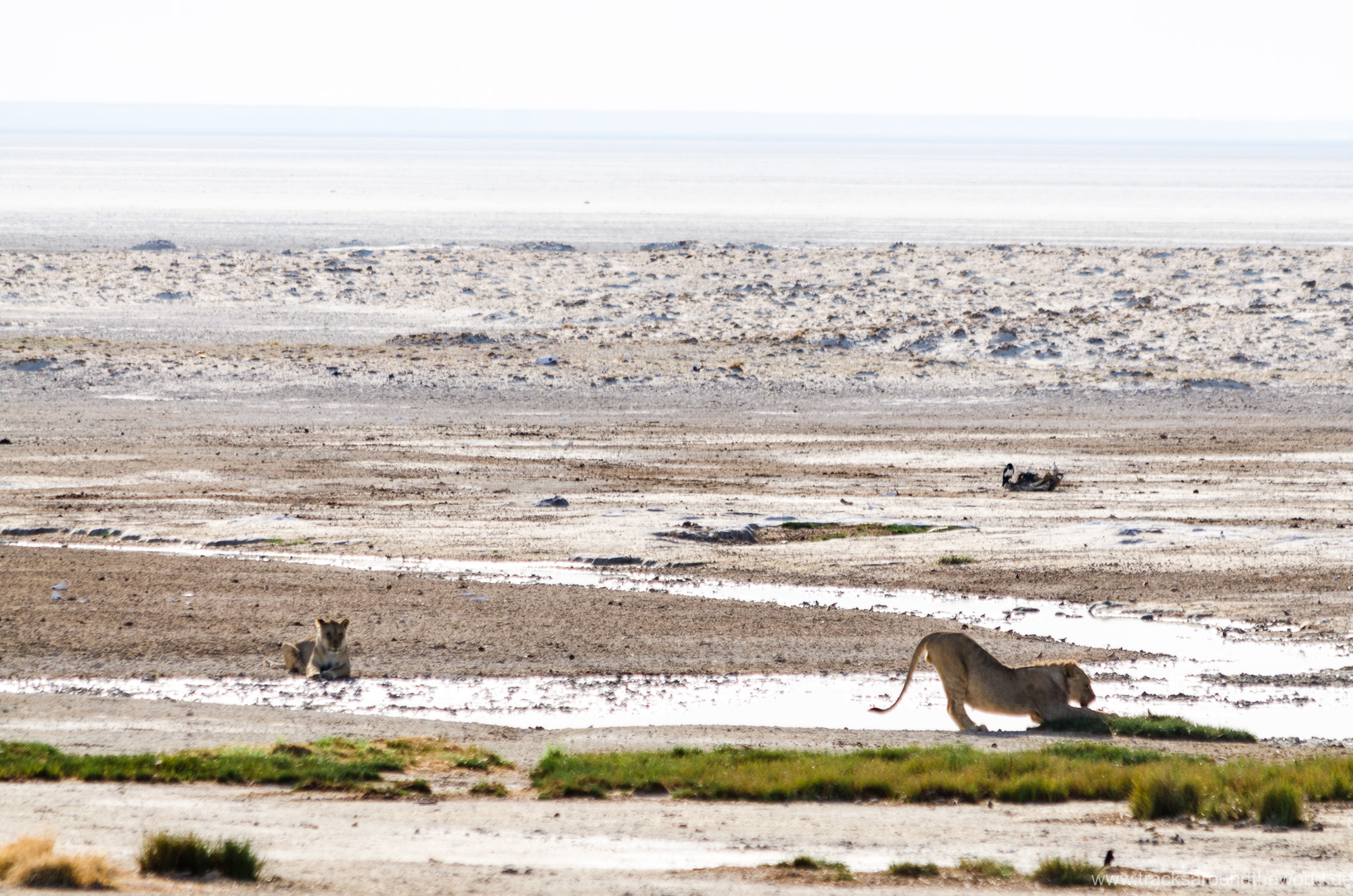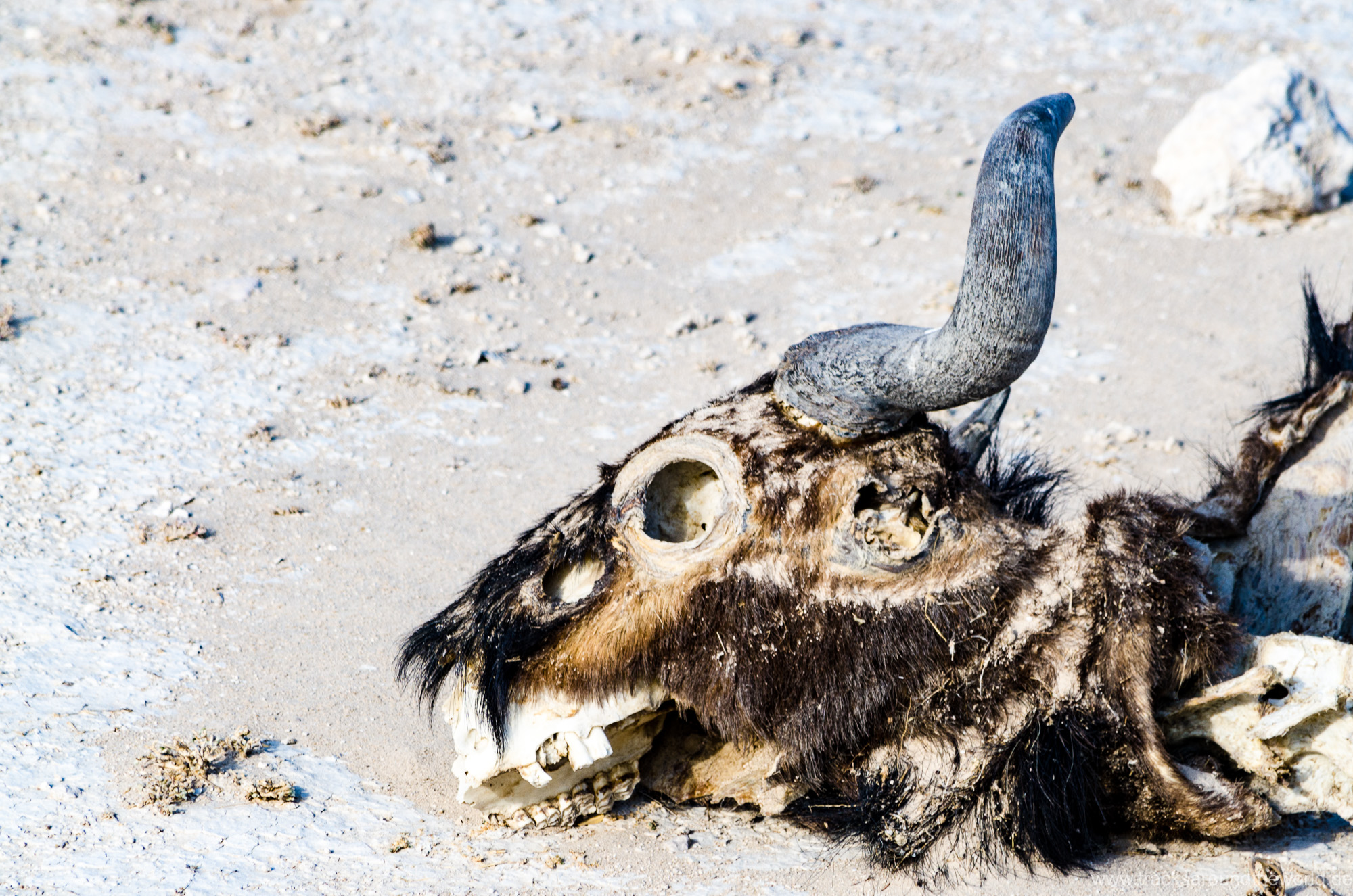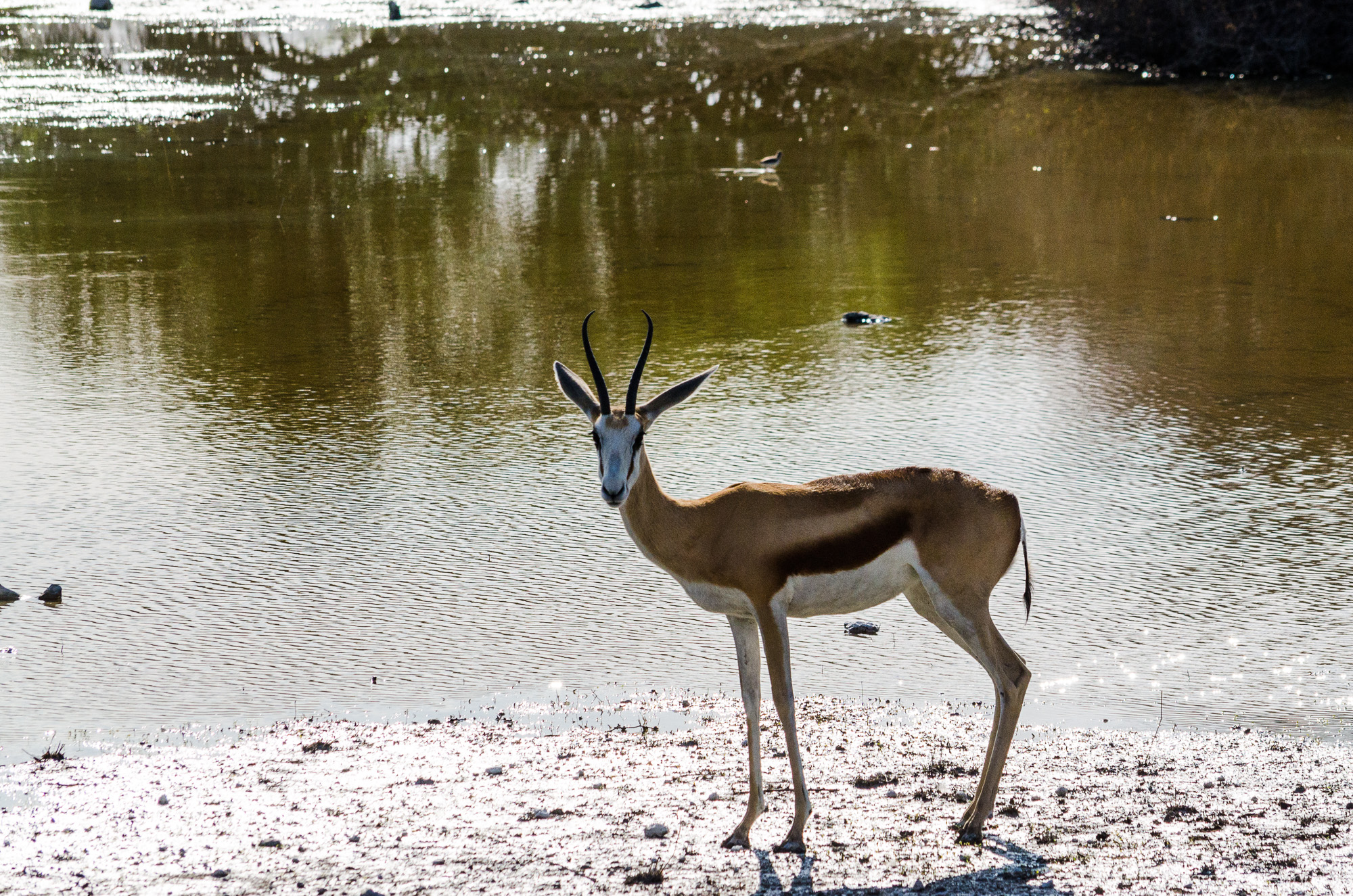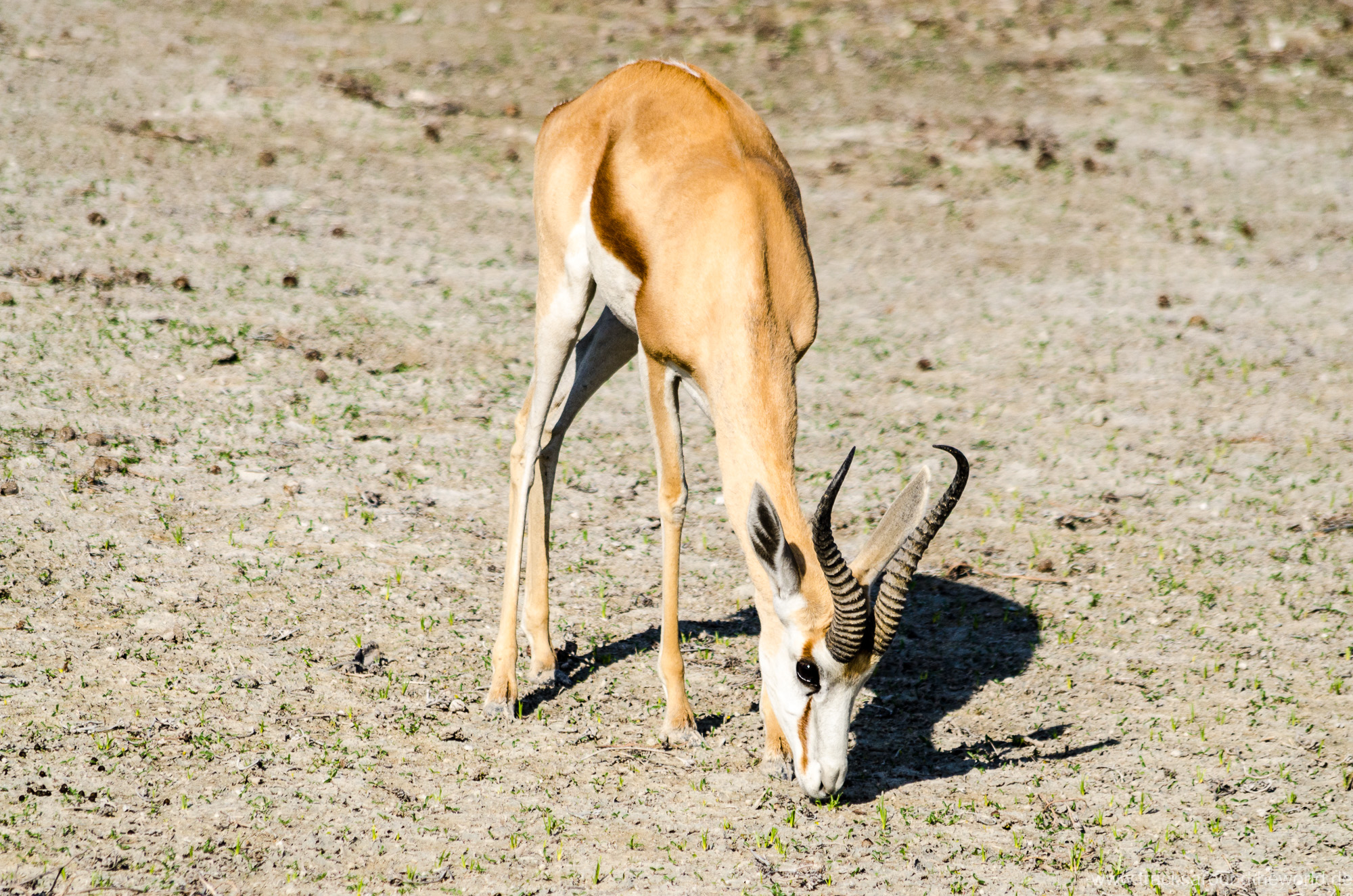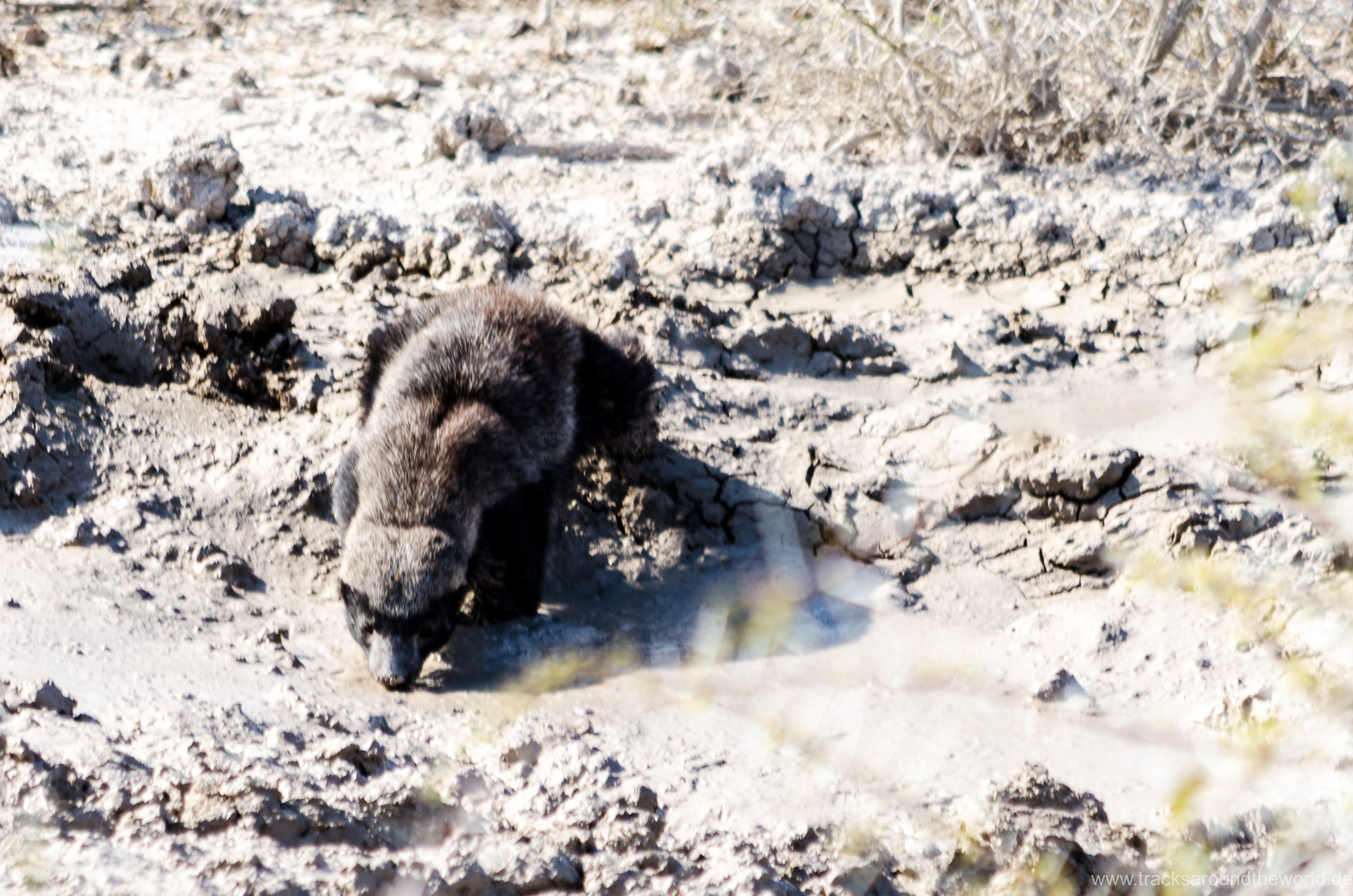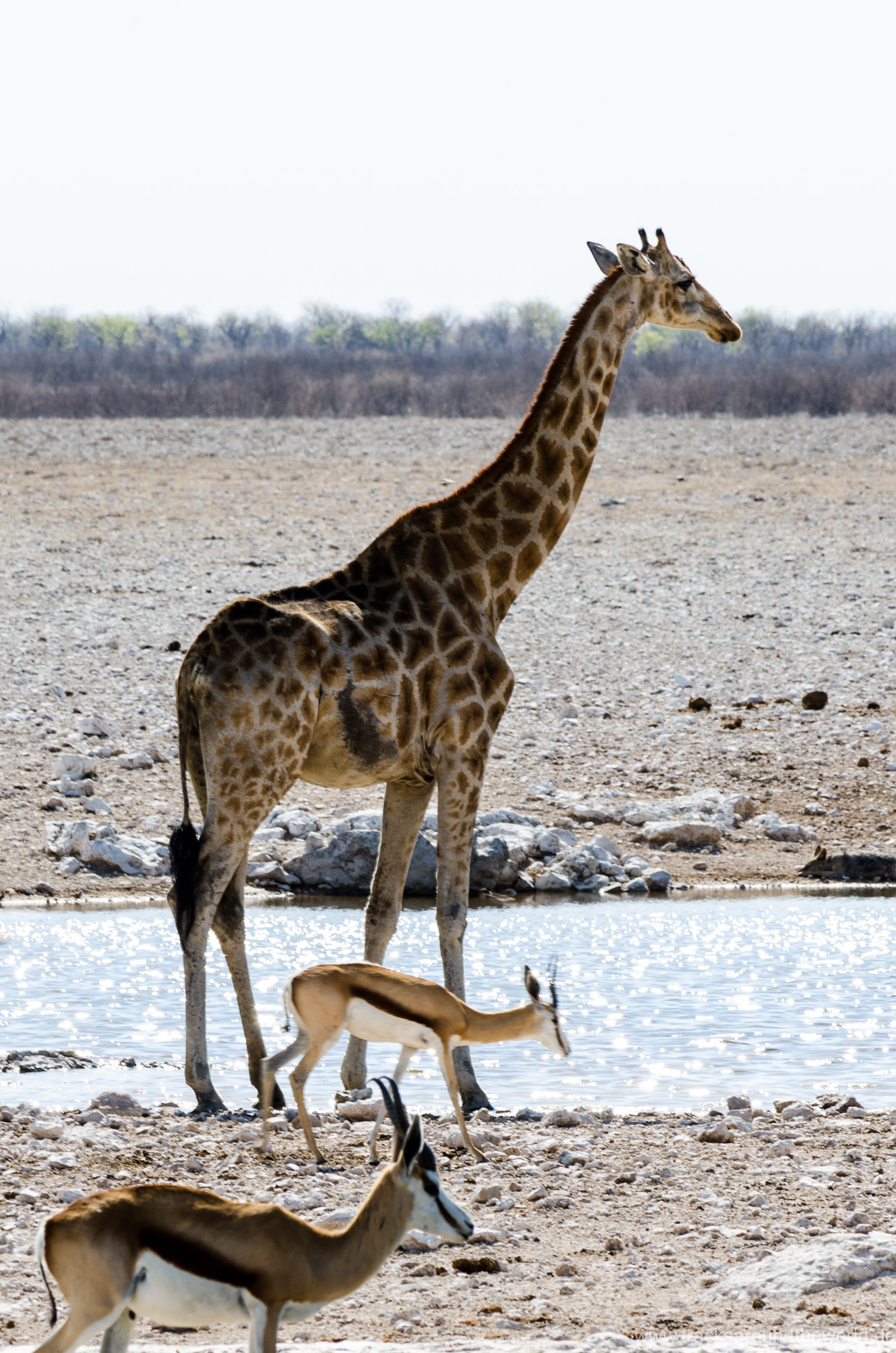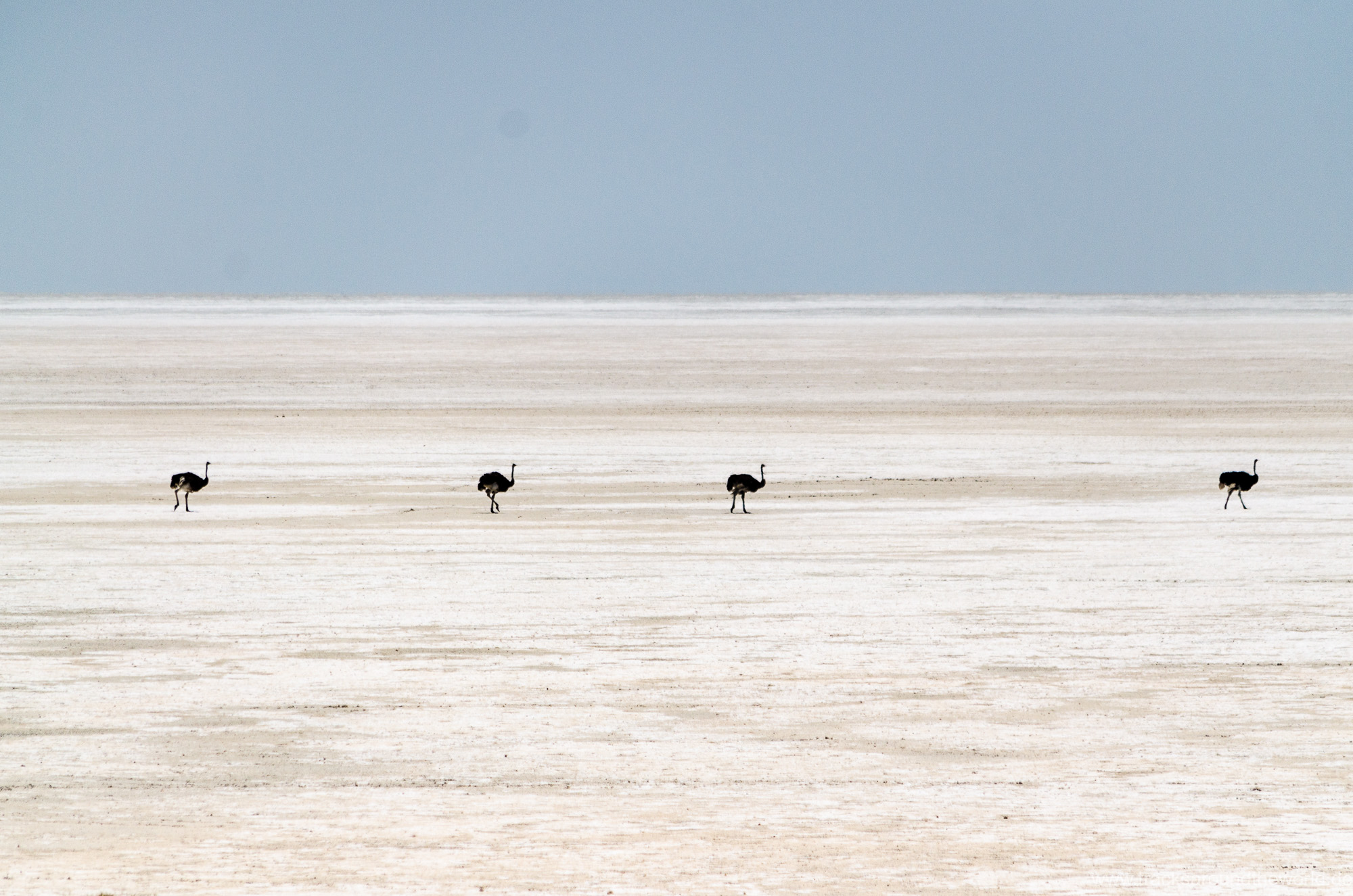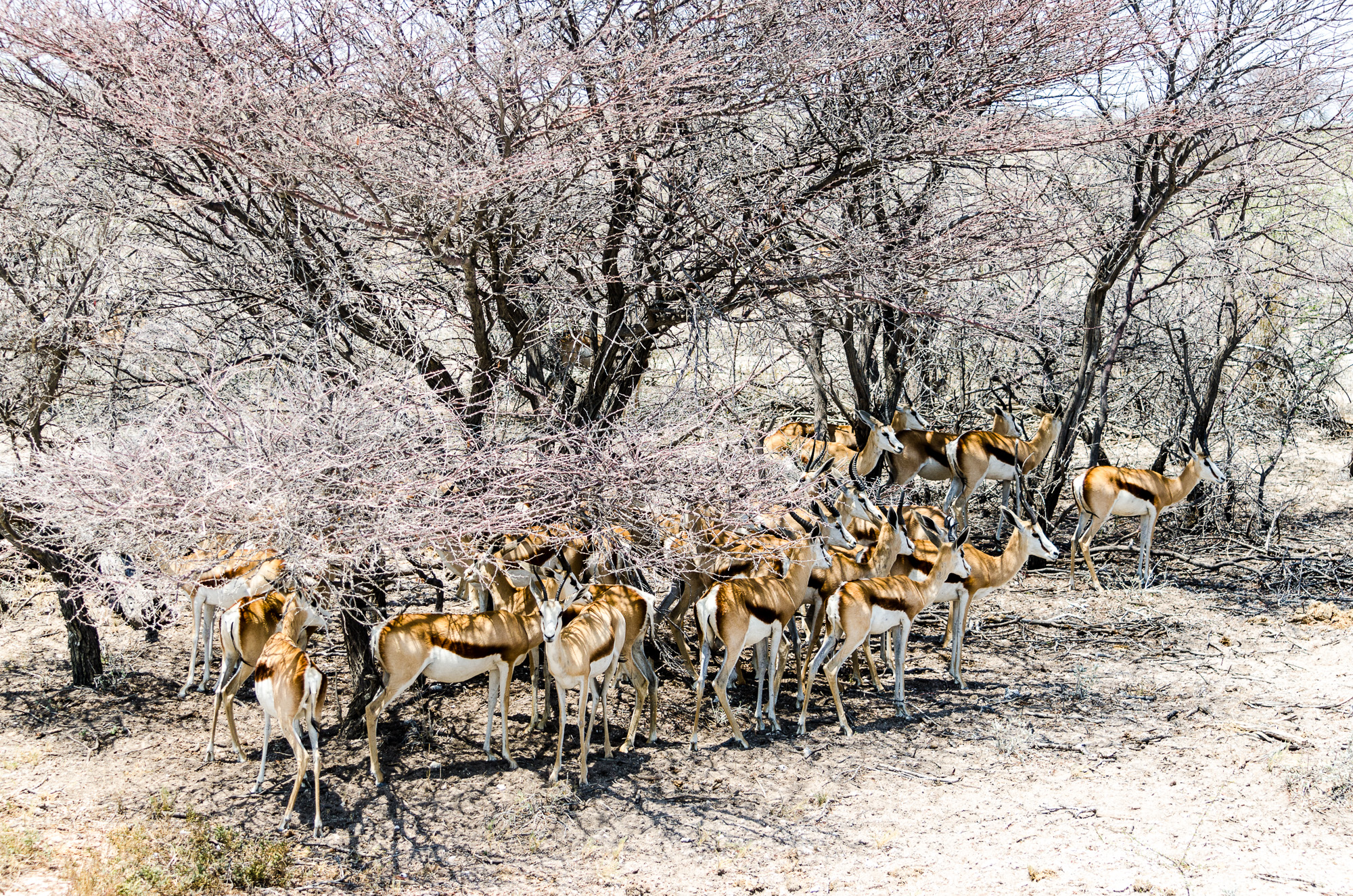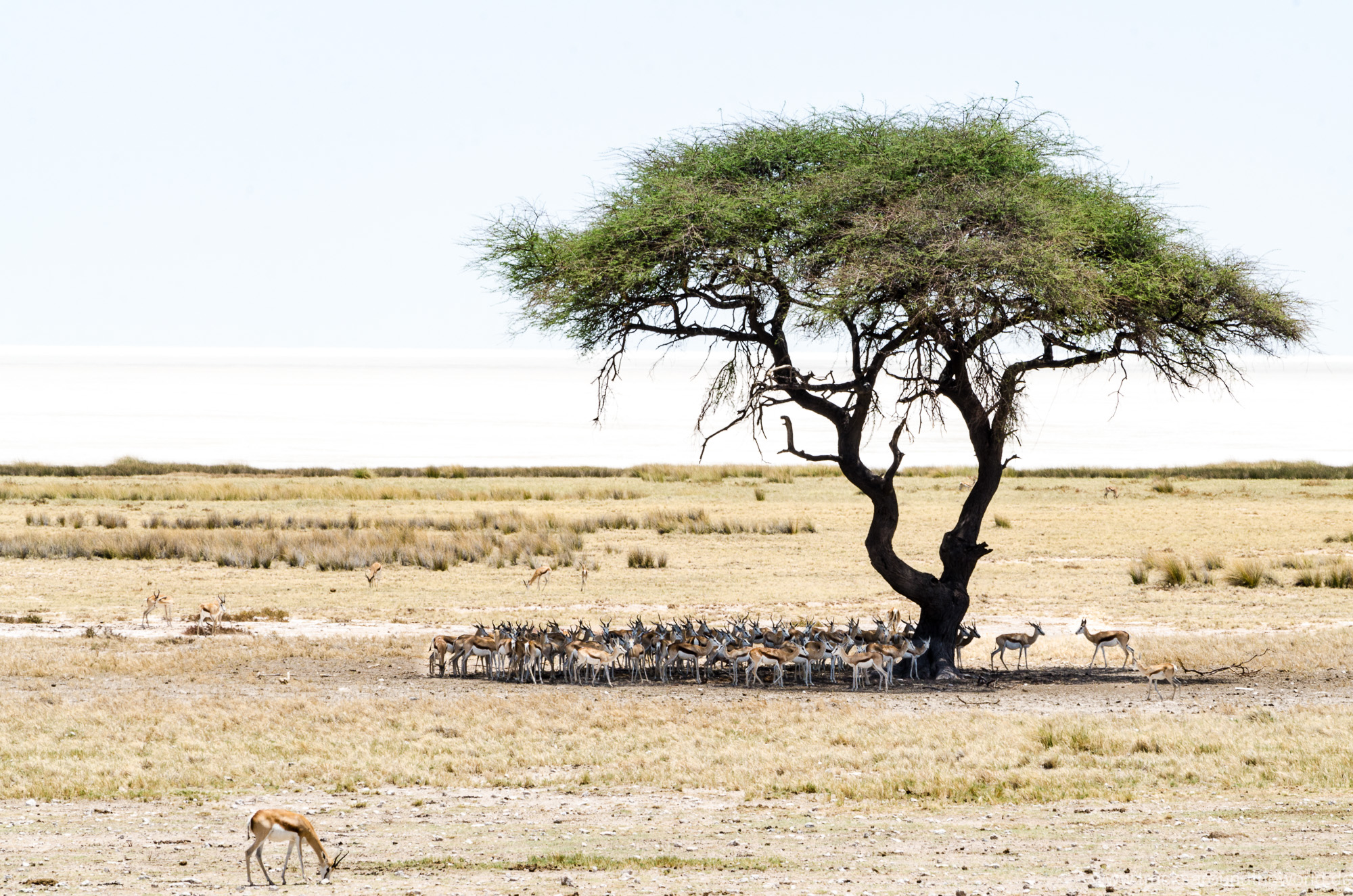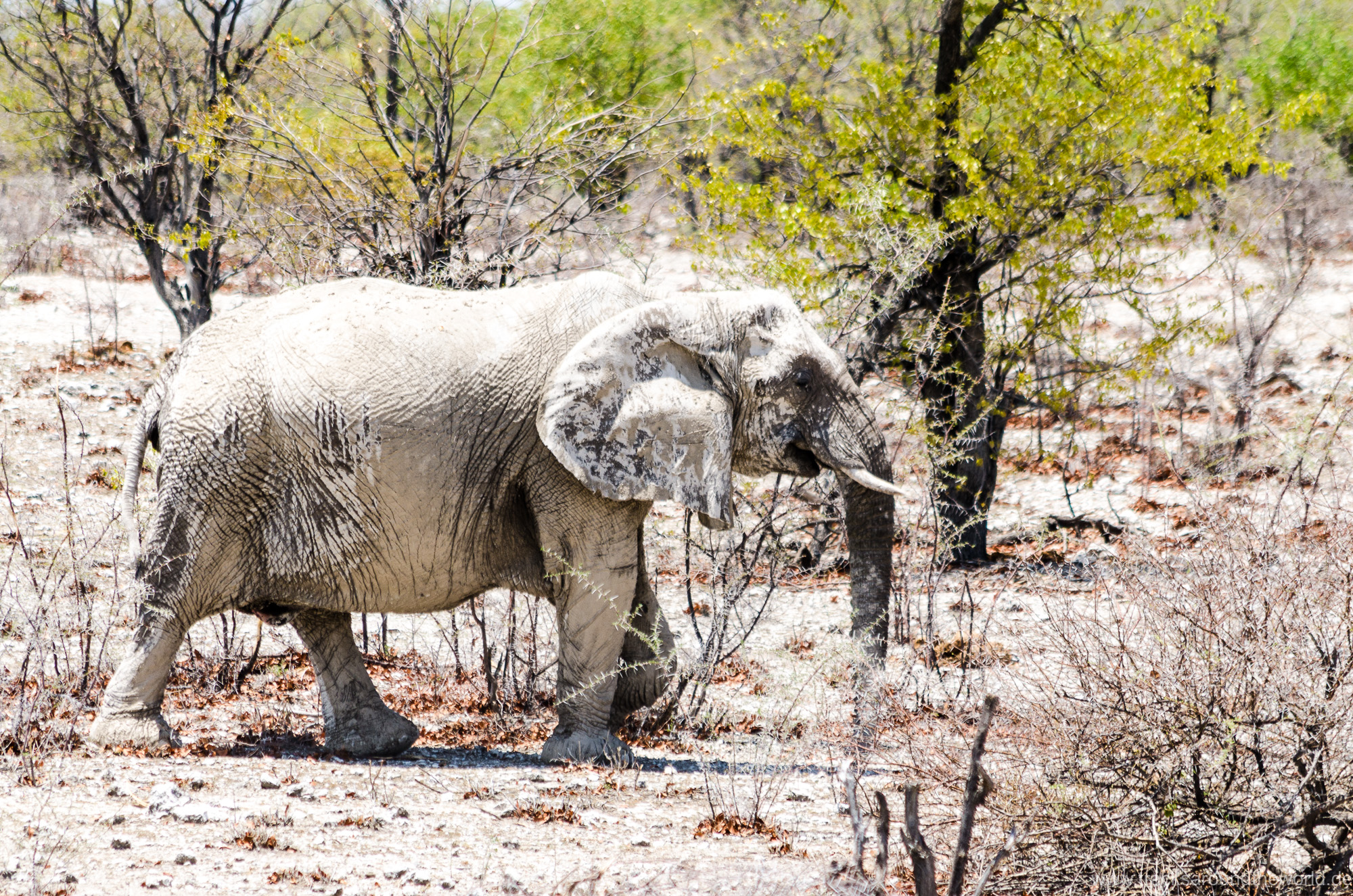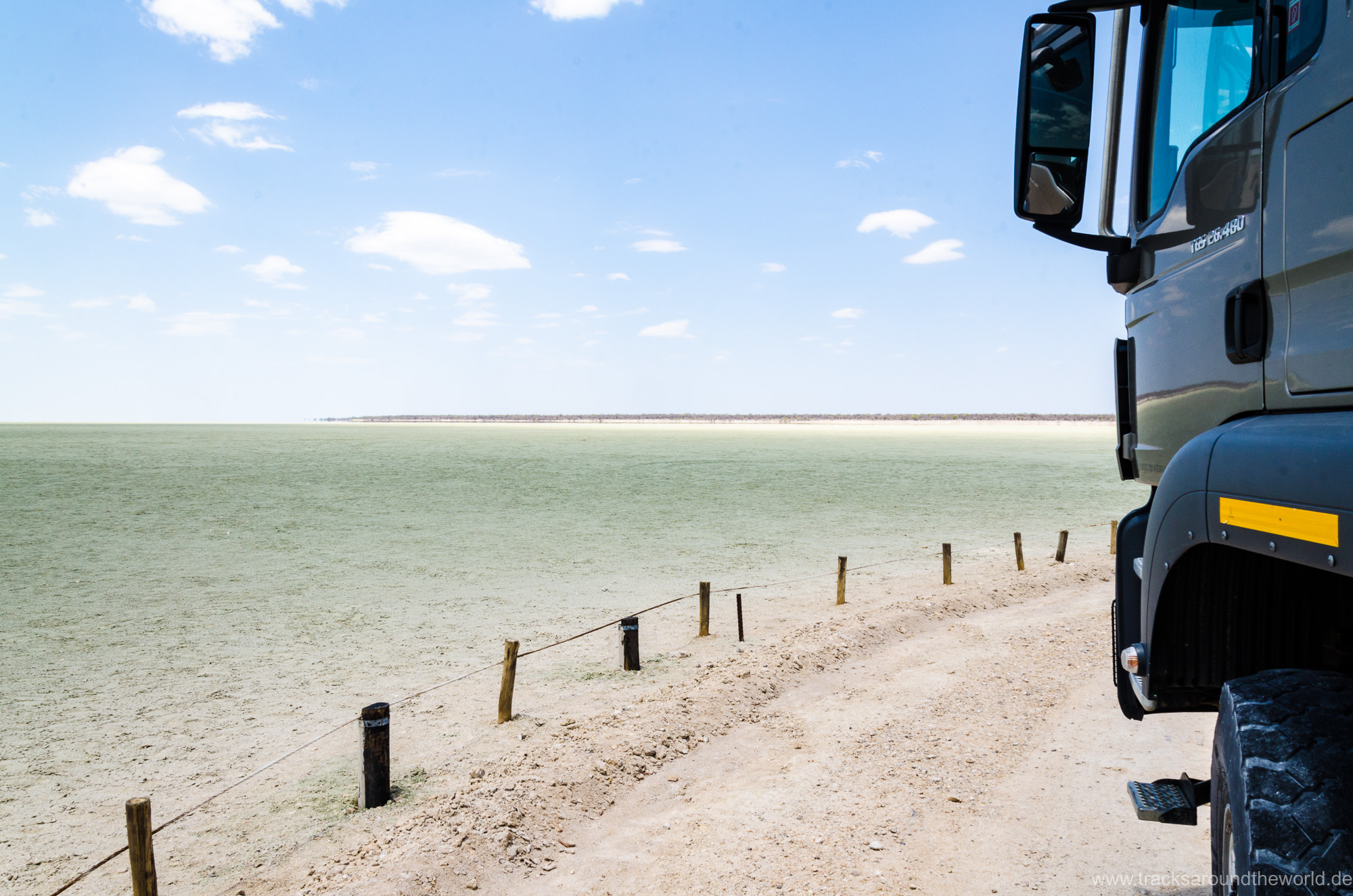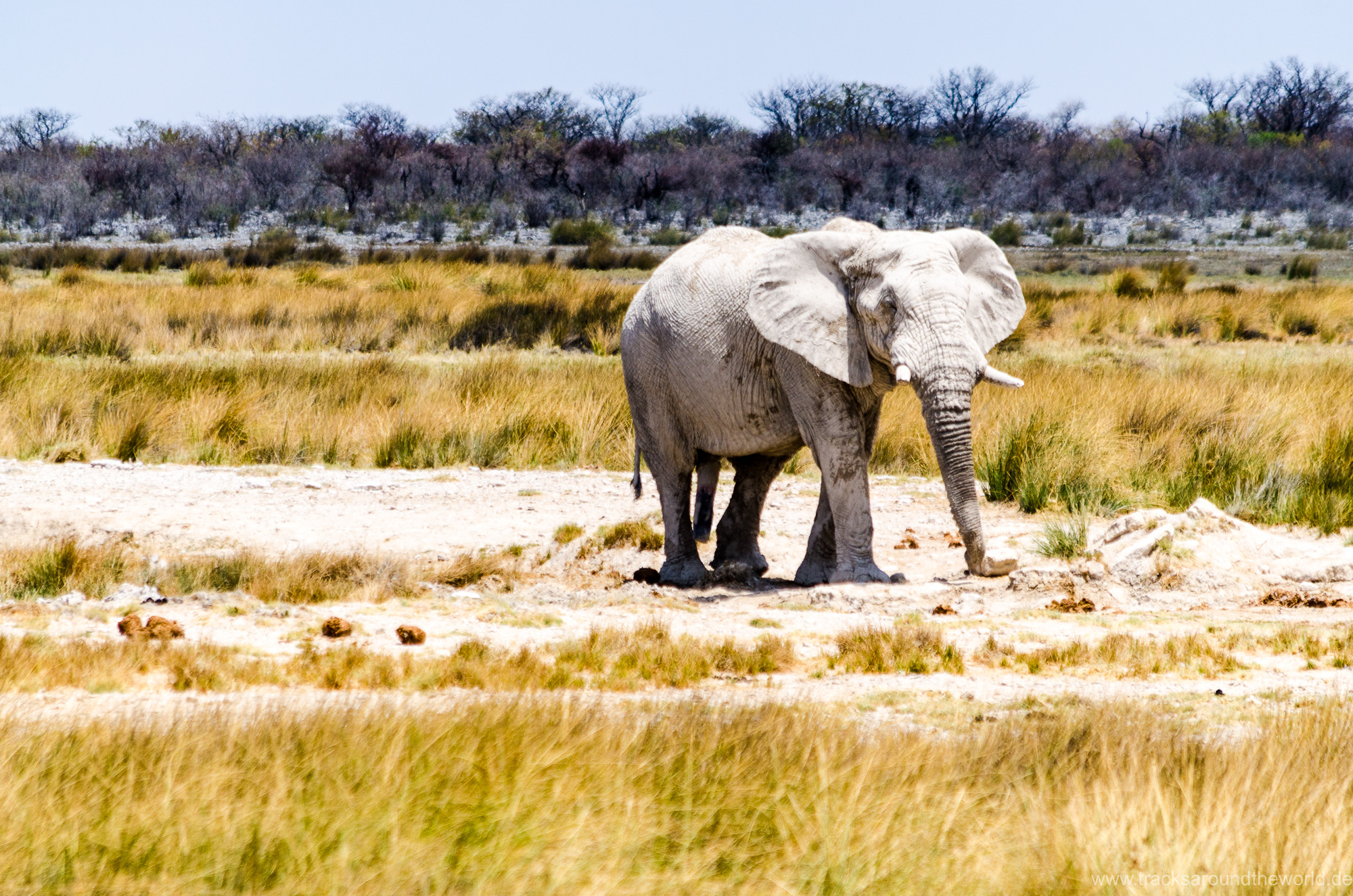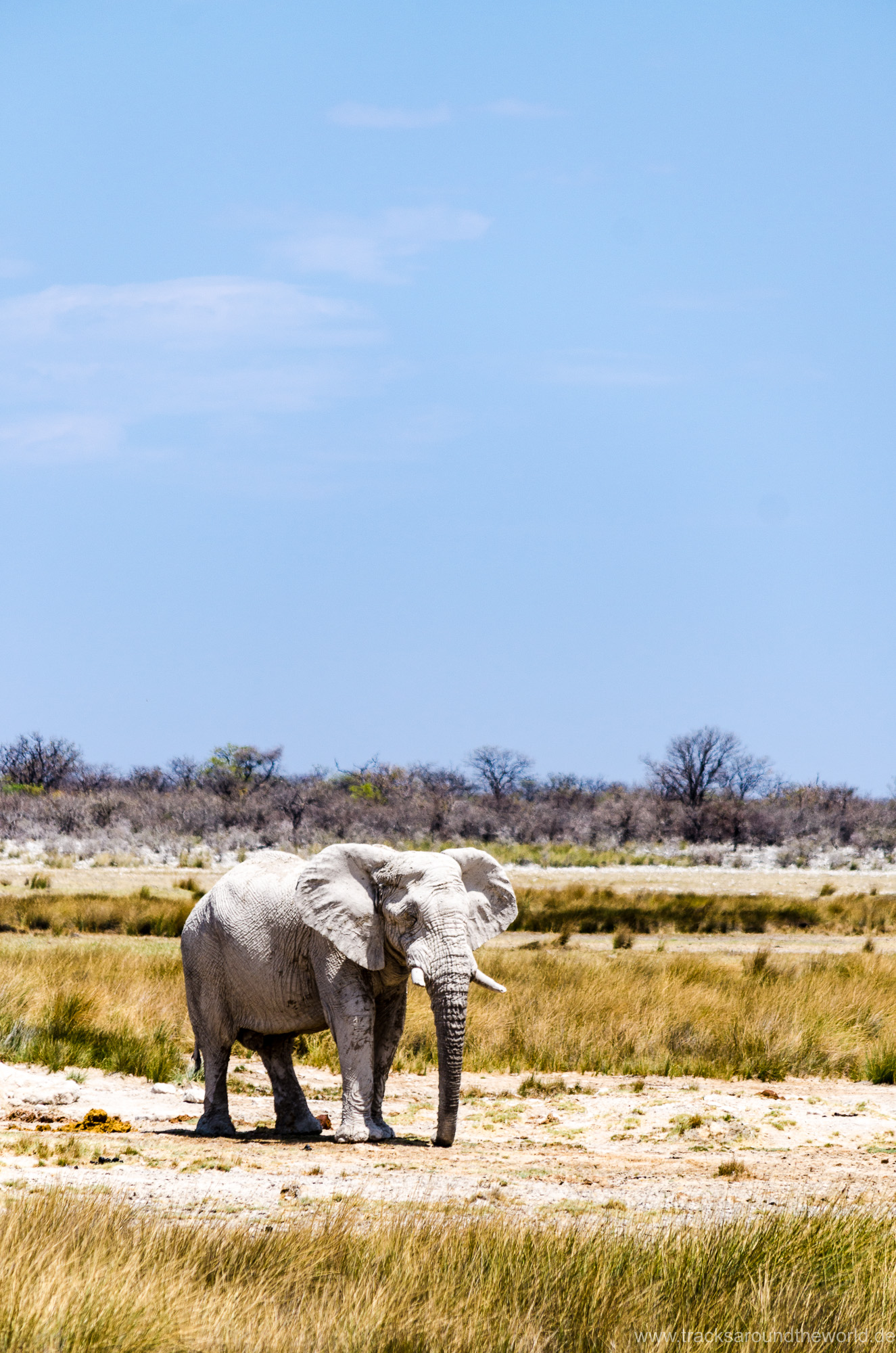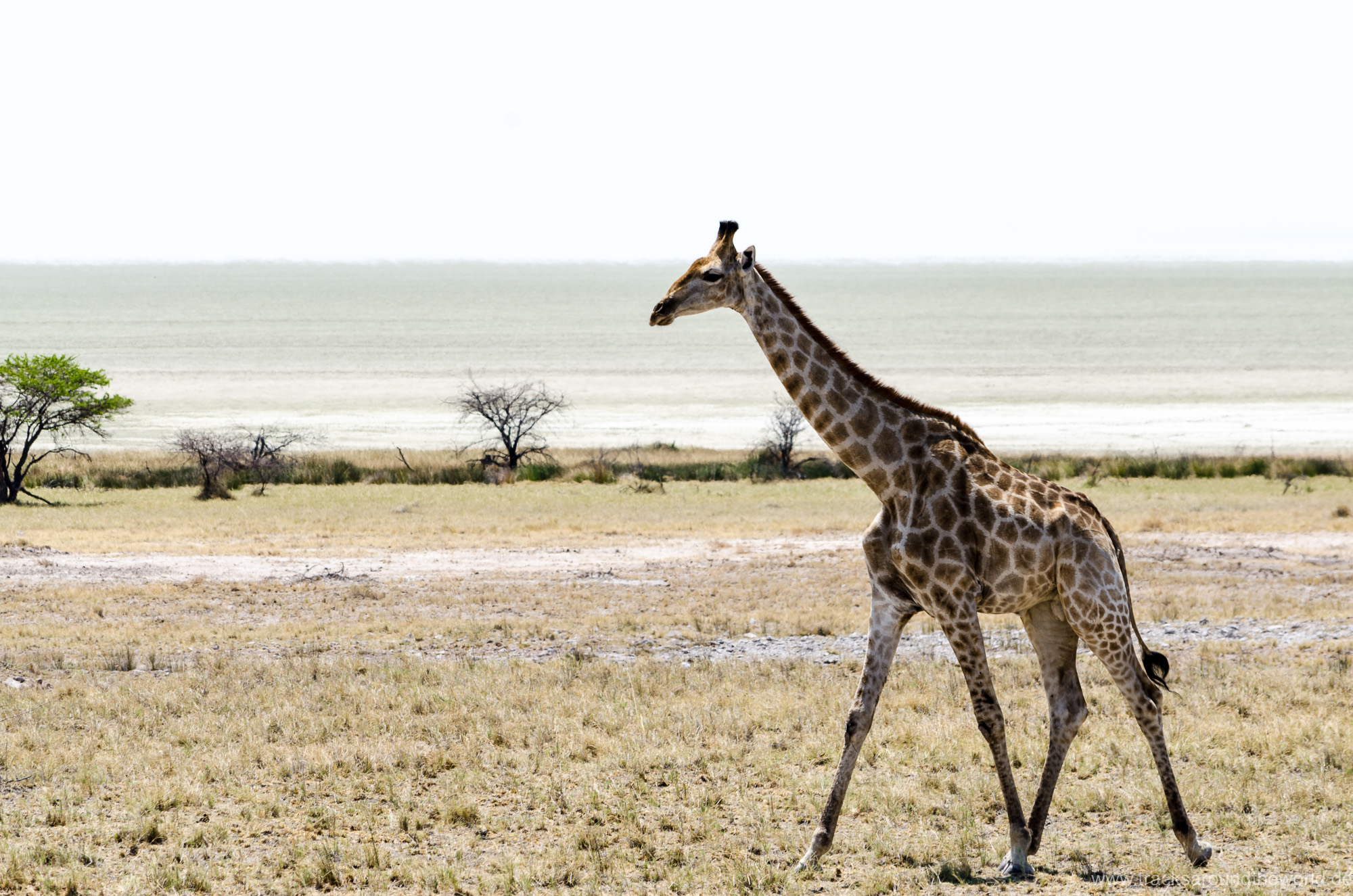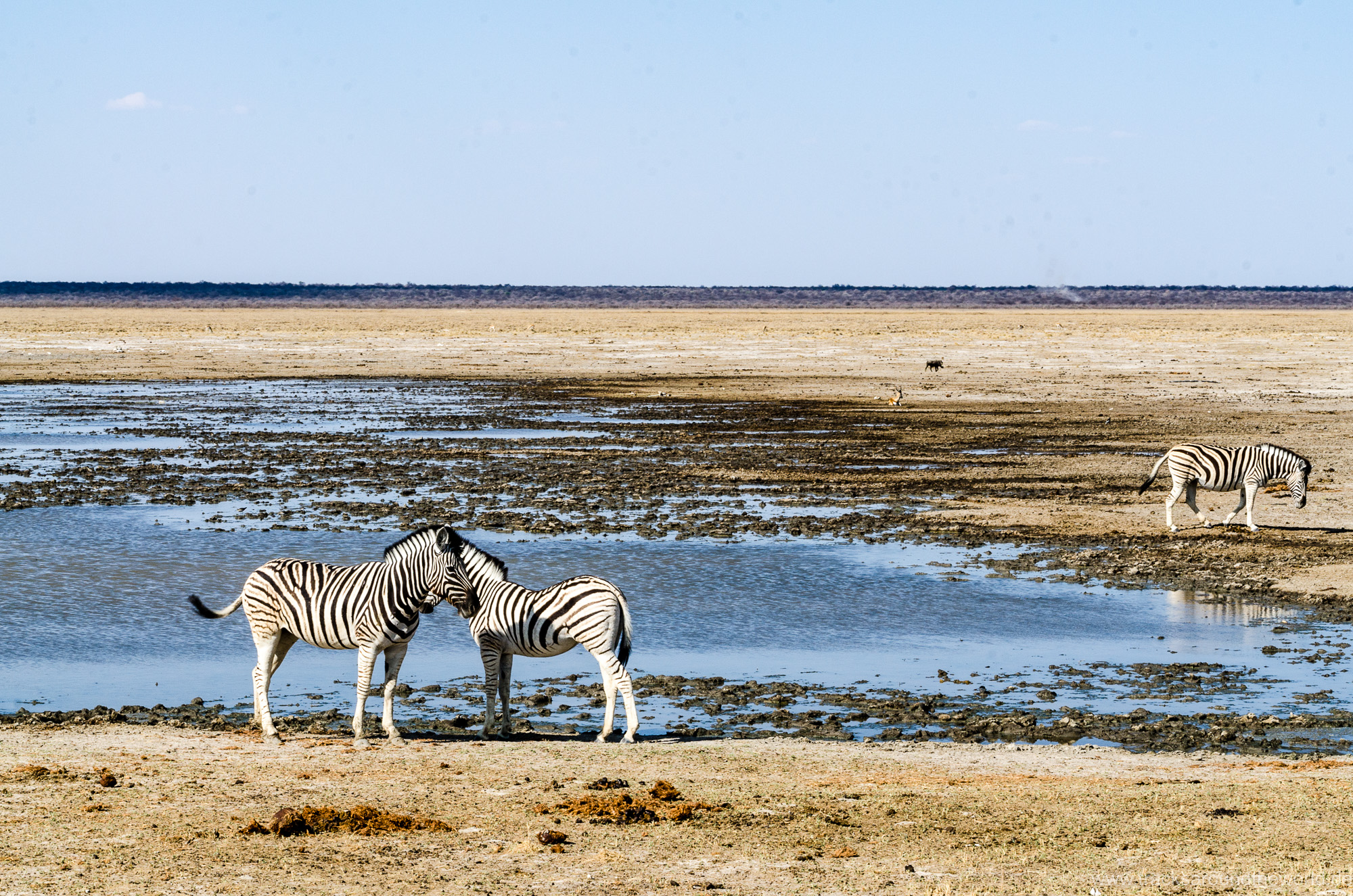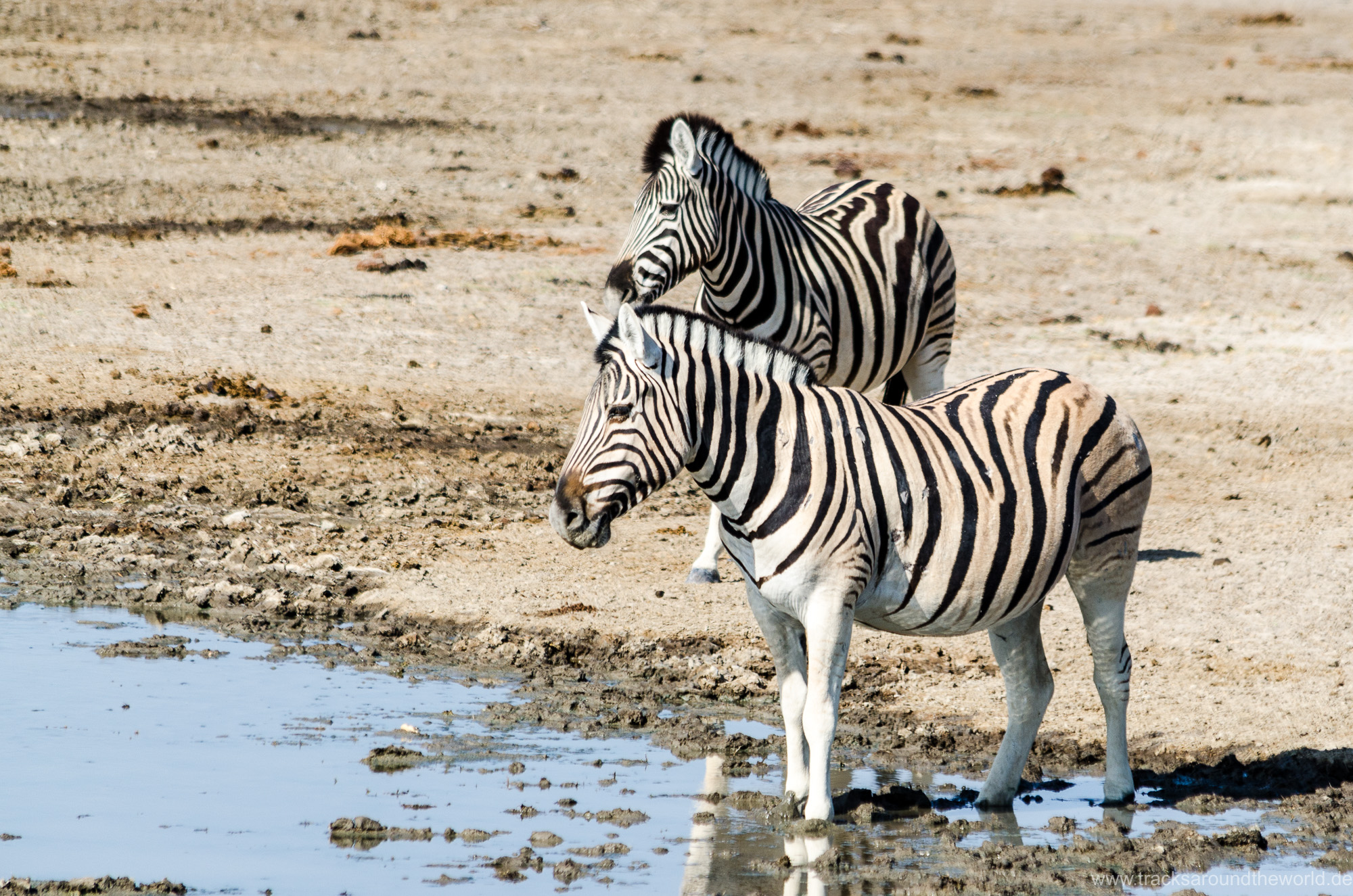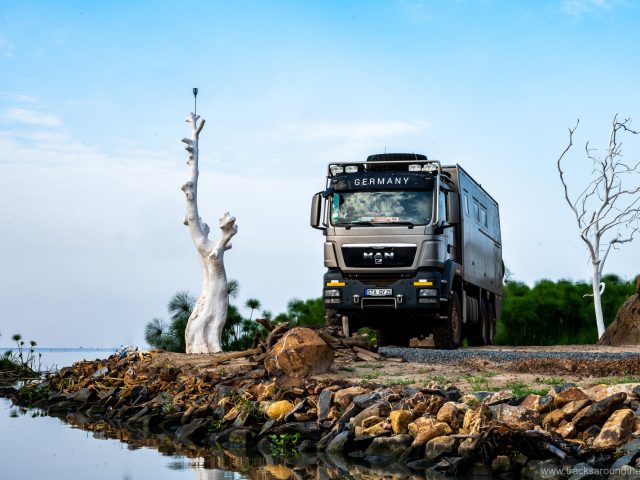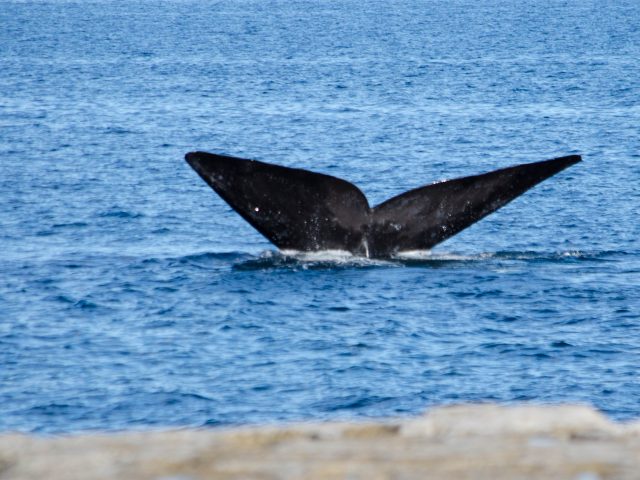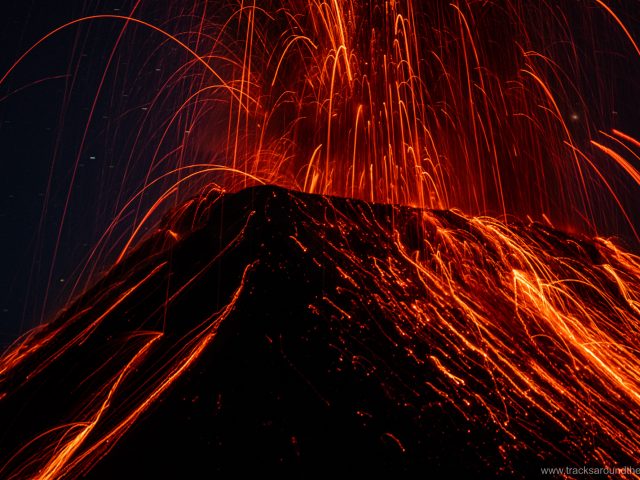After the exciting detour to the Richtersveld N.P., on the South African side, we enter again Namibia at the border near Oranjemund. Oranjemund was for decades completely isolated from the outside world (for example, the living there workers only twice a year the city leaves at all) and is only from autumn 2017 for the “public “Visible – all because of the high security due to extensive local diamond mining. Of course we are looking forward to this place. But apart from the many oryxs, who do not hesitate to graze on the green, lush, irrigated lawn in the middle of the inhospitable coastal desert, we find nothing spectacular here.
At the Oranje, the border river between Namibia and South Africa, we stay again at our fantastically beautiful pitch from six months ago. Because we liked the Namib Desert so much, we decide spontaneously to drive once more the partly heavy corrugated pad over the Tiras mountains and Sesriem to the Blutkuppe – instead of taking the comfortable paved road to Windhoek. This time we get heavy sandstorms and are glad that we can stay in our foreclosed cabin, with running air conditioning while the storm is taking place outside.
The Blutkuppe is inspiring again, especially at sunset. Unfortunately, I have to climb up alone and therefore refrain from taking a sundowner at the summit. Karin has stumbled into a broken wine glass while entering into the darkened cabine and has hurt her foot. Part of the second toe is peeled off and is bleeding heavily. This time I can play the doctor and get out the gauze dressings, disinfectants, etc. Unfortunately, such a thing is also part of overlanding travelling, but the next day Karin limps around the area again quite cheerfully.
We had skipped the Spitzkoppe – the so-called “Matterhorn” of Namibia – during our stay in Namibia six months ago. Now we are impressed: not only by the mighty rock formations, but also by the thunderstorm with heavy rain, which we can observe from our elevated pitch at the edge of the mountains. The so-called “little rainy season”, which started very early and intensively after years of drought in Namibia this year, makes it to the front page of the “Deutsche Zeitung Namibia” in the next three days – it is so important for the local people, and we meet some people who actually pray that the rain will continue.
After extreme temperatures of over 40°C, with some very strong winds, sandstorms and thunderstorms, we are happy to get into the slightly cooler Windhoek. On the property of our friends Bärbel and Lothar we have a great parking space for our freshly washed Shujaa and enjoy two great days with good conversation, good food and excellent champagne 😉. Since their children, together with their grandchildren, are approaching and we still have some things to do, we leave the field with a heavy heart. With Andreas we meet a German Overlander with his 6×6 MAN Kat …. So far we have only been in intensive written contact and now we have a very pleasant personal encounter.
Timing is everything: After our German visa agency did not manage to get our Angola Visa in time, we have taken the process ourselves and have applied online for the vis. In fact we get our entry permit exactly on the relevant day for our onward journey: So we head north, drive another day through the Etosha Park (the last lion’s observations have been a few months ago;-) and experience the park now much greener and with huge, grazing herds of animals. Again, the “small rainy season” has already arrived and we get spectacular evening storms over the pan. The nature and, above all, the animals are pleased.
The next day we approach the notorious border with Angola. Until recently, obtaining a visa for Angola outside the home country was almost impossible, but Angola has also realized that it somehow has to reduce reliance on the oil business. In 2.5 hours we are through the boarder without problems and we are looking forward to this last adventure, before we start our home leave in late November / early December.


